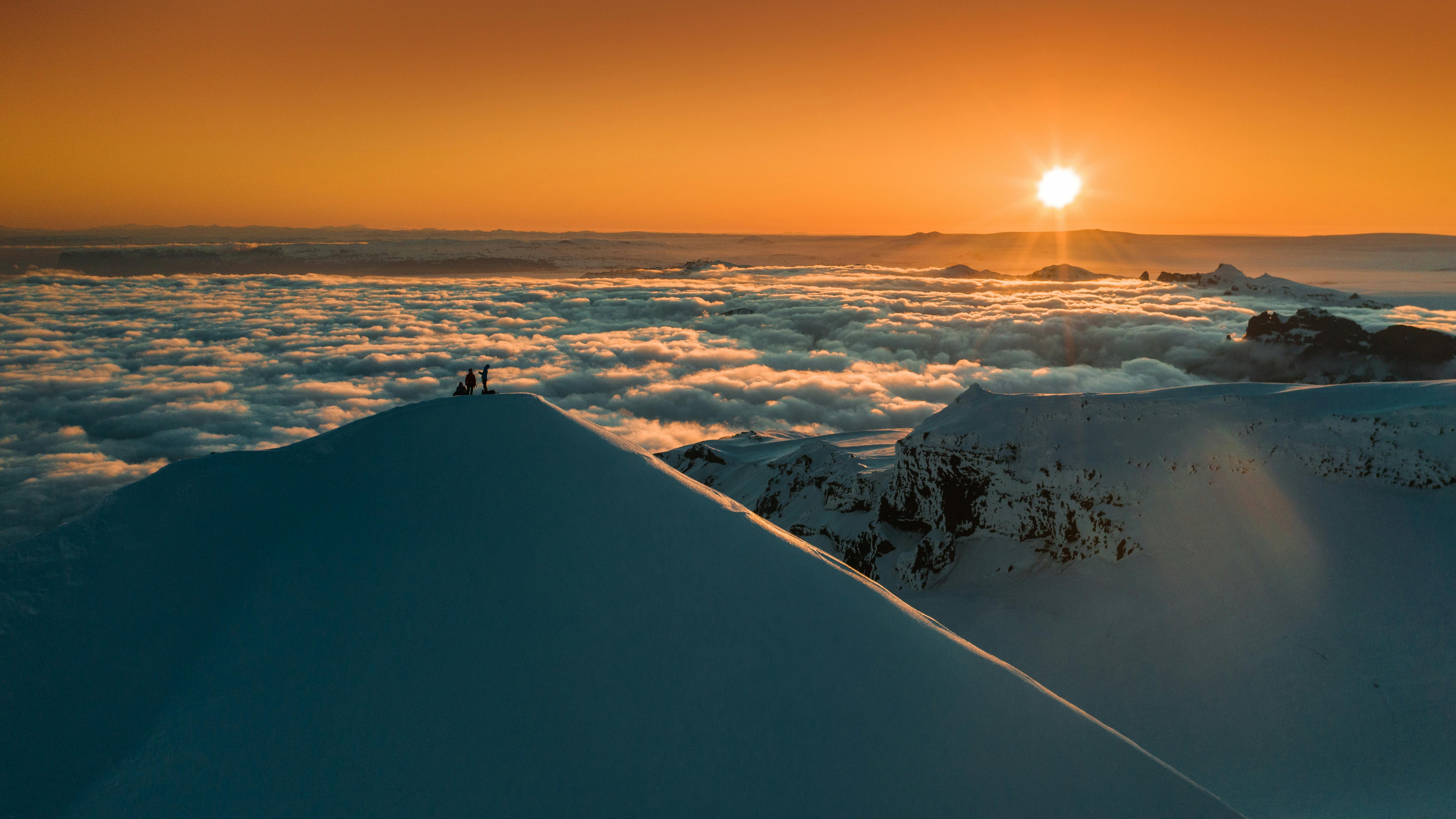
A vertical journey up the south face of Hrútfjallstindar.
Climbing the Ram
Climbing one of Iceland’s holy grails of alpine climbing, the south face of Hrútfjallstindar.
In the spring summit season of 2020, professional mountaineer and explorer Siggi Bjarni Sveinsson set out with a mission to climb one of Iceland’s holy grails of alpine climbing, the south face of Hrútfjallstindar – known as the Ram mountain. Working with photographers and outdoor enthusiasts Benjamin Hardman and Þorsteinn Roy Jóhannsson, the team of three had a goal to do the climb expedition style over three days, carrying all of their equipment on their backs and documenting the journey along the way.
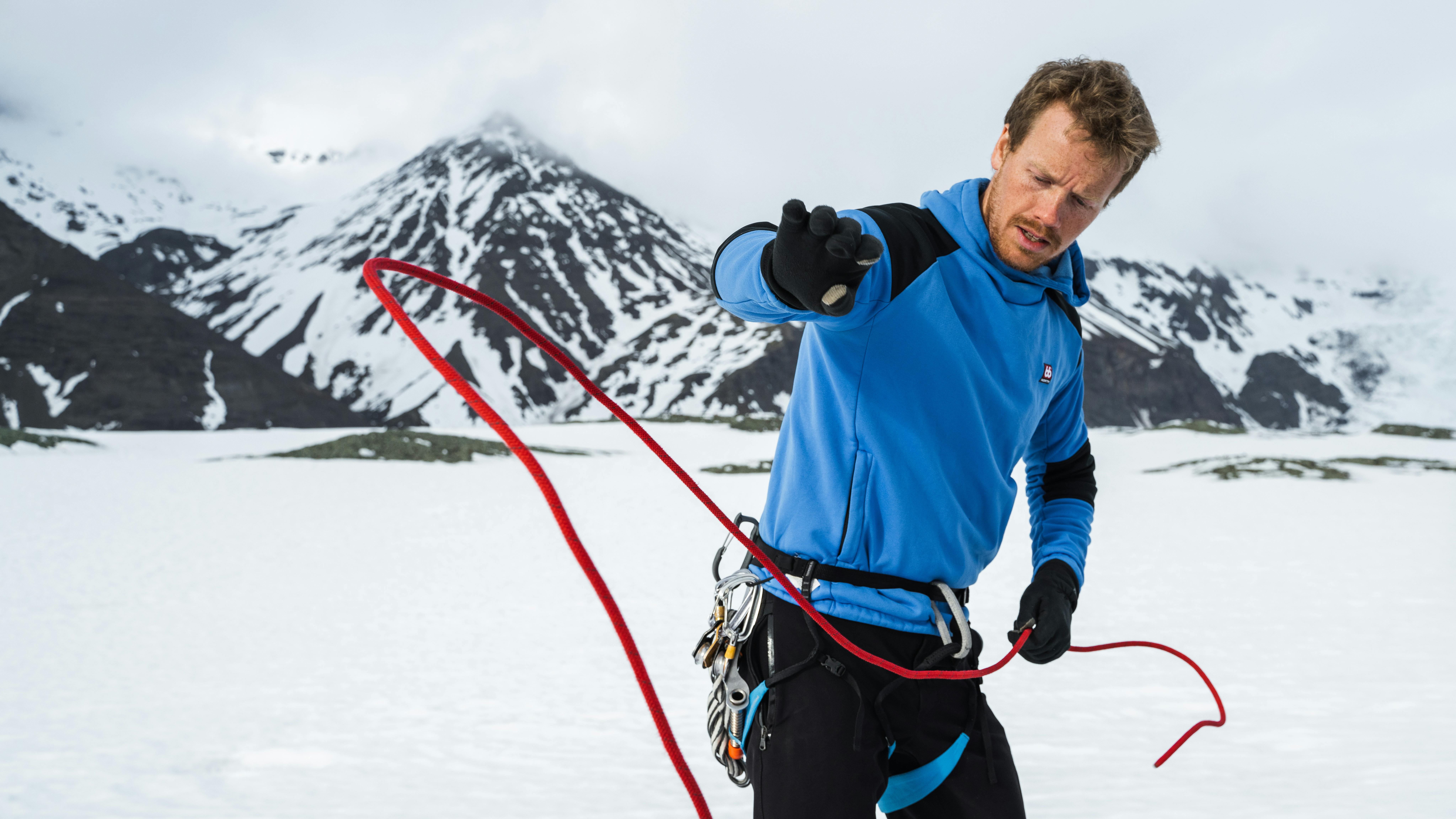
Siggi took us through the climb, recounting each day as the team made their way up to the summit.
Having grown up at the base of the mountain in the village of Svínafell, Þorsteinn approached Siggi to explore an area he’d be dreaming of climbing for years. When you look up from the village, the mountains of Hrútfjallstindar and Hvannadalshnúkur tower over the landscape, they’re the highest peaks in the country. His family has been herding sheep across the glaciers at the base of the valley for decades, and this climb was finally an opportunity to go up to the high peaks.
Þorsteinn told us that the mountains were just an everyday thing for him as a child. It wasn’t until he moved to Reykjavik that he realised how incredible the backdrop of his home really is, and now he uses every opportunity to be out on the glacier exploring the area. The high mountains however, had still remained unexplored for him.
Siggi took us through the climb, recounting each day as the team made their way up to the summit.
‘’Earlier this year, Þorsteinn got in touch with me with an idea to climb Hrútfjallstindar. The four peaks of Hrútfjallstindar rise out of the Vatnajökull ice cap, standing between the glaciers Svínafellsjökull and Skaftafellsjökull, and the highest peak is about 1,875m. The glaciers are magnificent and feature one of the most beautiful mountain views in Iceland.
This new adventure sounded really exciting and I suggested we climb the south side, which is more fun and a harder climb than the traditional route. I had taken this route a few years back, so I had some idea of the magnitude of the task. In my earlier trip, the conditions were quite hard on the way up, with wet snow up to our knees, turning into waist high powder near the summit. This ended in a 22-hour trip in extreme conditions, which taught me to never underestimate the south side of Hrútfjallstindar.
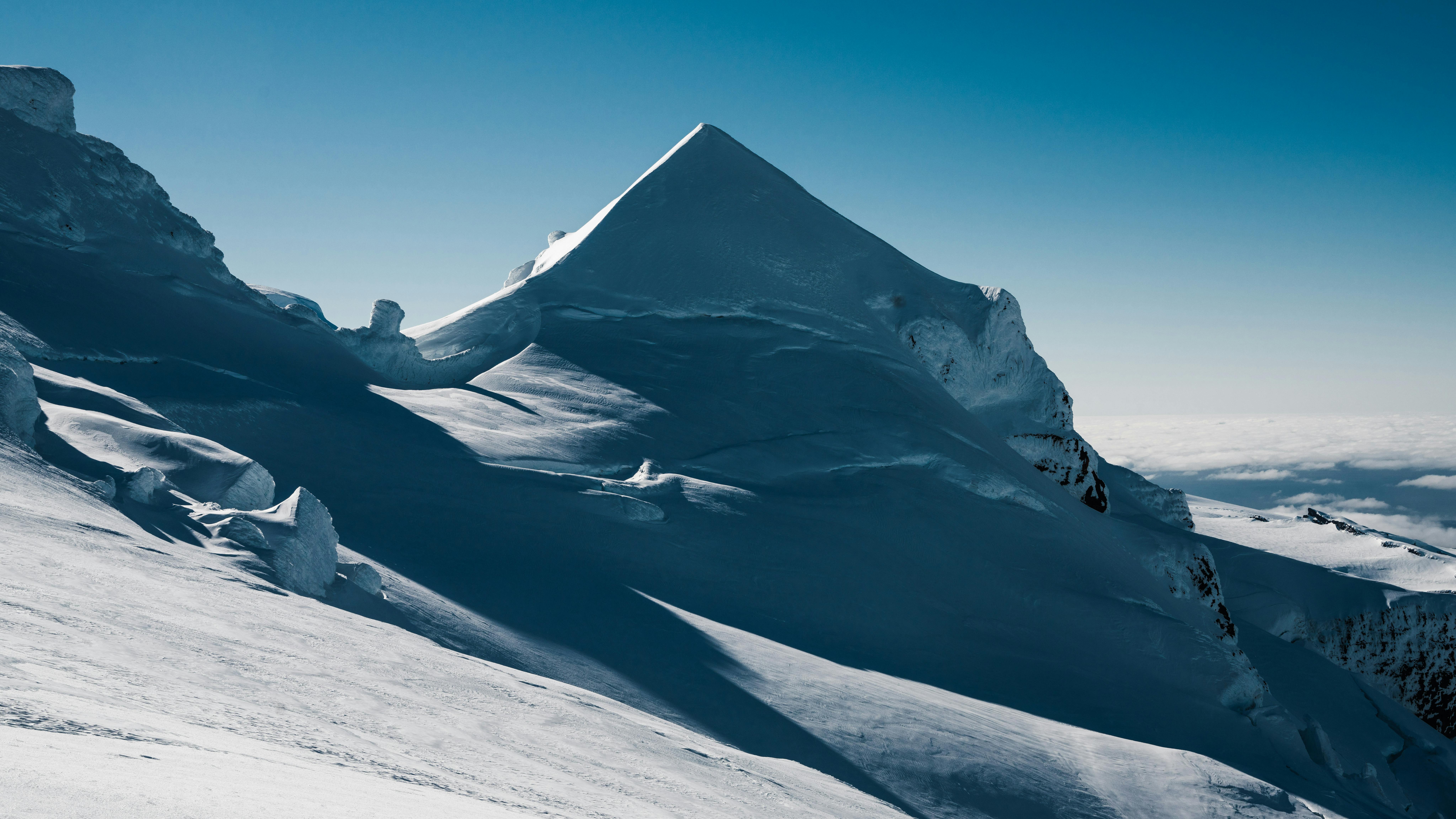
When you look up from the village, the mountains of Hrútfjallstindar and Hvannadalshnúkur tower over the landscape, they’re the highest peaks in the country
To complete such a project in three days, and do it well, you need a stable weather window and good conditions for climbing. When traveling with heavy equipment on mountain slopes, many things can affect the speed of travel. Rockfall can be a danger when the sun hits the mountains causing the frozen rocks to thaw and loosen, which along with falling ice can result in an avalanche, so there are many things that need to be considered. The snow needs to be stable, minimising avalanche risk, as well as thick enough to cover crevasses on the way. On the steepest part of the slope, the ice needs to be adequately frozen to allow for ice climbing, and the snow needs to the right density so that it is possible to travel with a lot of weight, without getting tired. The human factor is, however, always the most important. Having a well-coordinated team that can respond to situations quickly and safely, working together for a safe and fun trip, whilst taking time for photographs, is less common than you’d think, but this time, this team had it all.
From my experience, the start of May has excellent conditions up on the glacier, and after checking the forecast, I noticed that a good weather window ahead. Such a good weather window could not be missed and with only two days' notice, we decided to go-ahead with the climb.
There were still some uncertainties about where the best conditions for climbing the slope were and what the snow would be like. The biggest uncertainty, however, was how we were going to get to Hrútsfjall as it is situated on the back side of Svínafellsjökull, meaning you need to traverse the glacier to get there. In my earlier trip, the route onto Svínafellsjökull was open near the main carpark at Hafrafell, however, that route was no longer possible due to how much the glacier has retreated in recent years. As Þorsteinn had been herding sheep in the area earlier in the year, he suggested that we go onto the glacier on the other side of the valley by his home in Svínafell. This information would have to be enough to get started, but the continuation of the trip needed to be flexible depending on what we’d find once reaching the glacier.
Climbing the Ram
Day 1
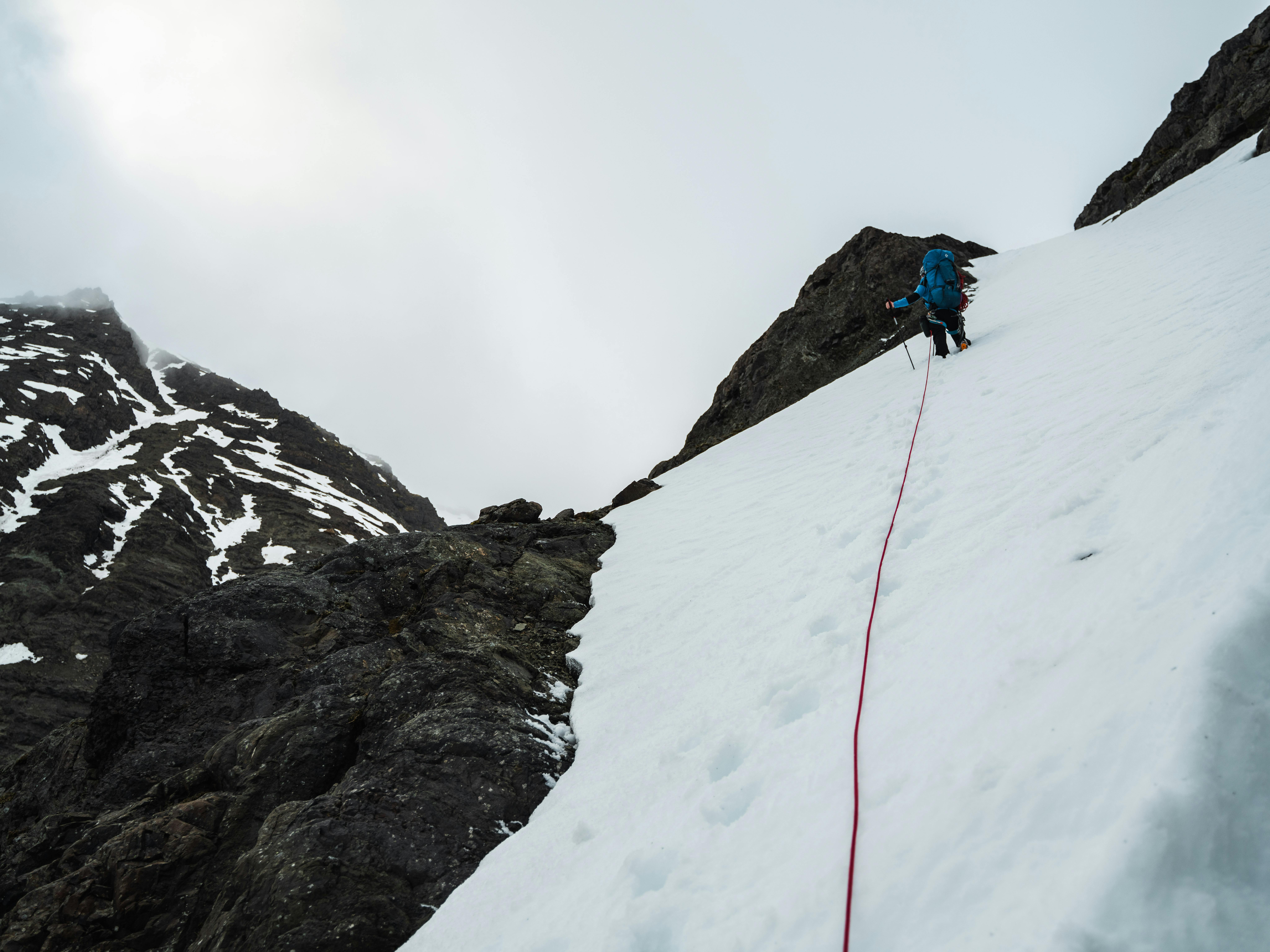
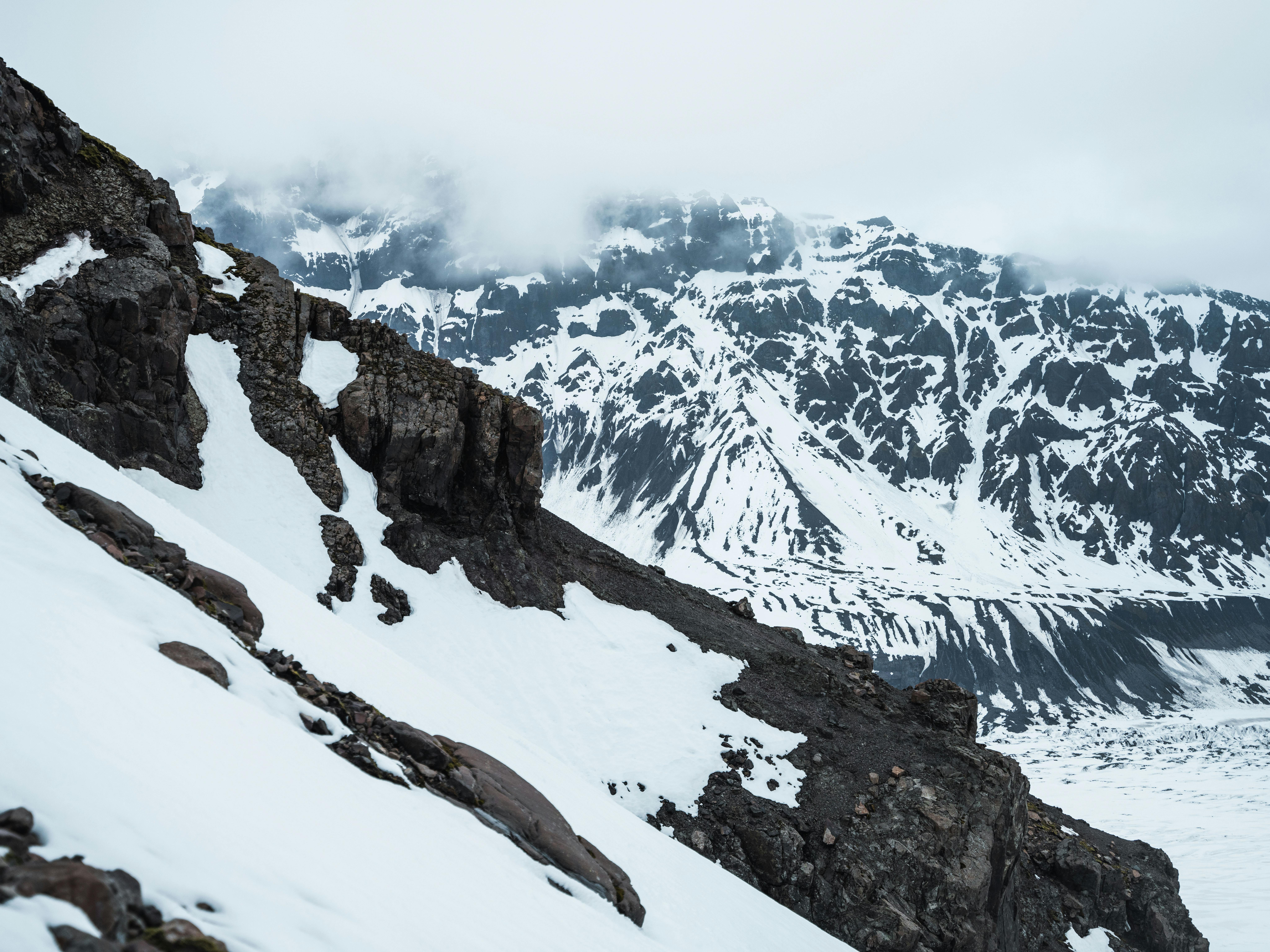
We began with a hike along the side of Svínafell. Our backpacks were a bit heavy, but we managed to traverse the slopes
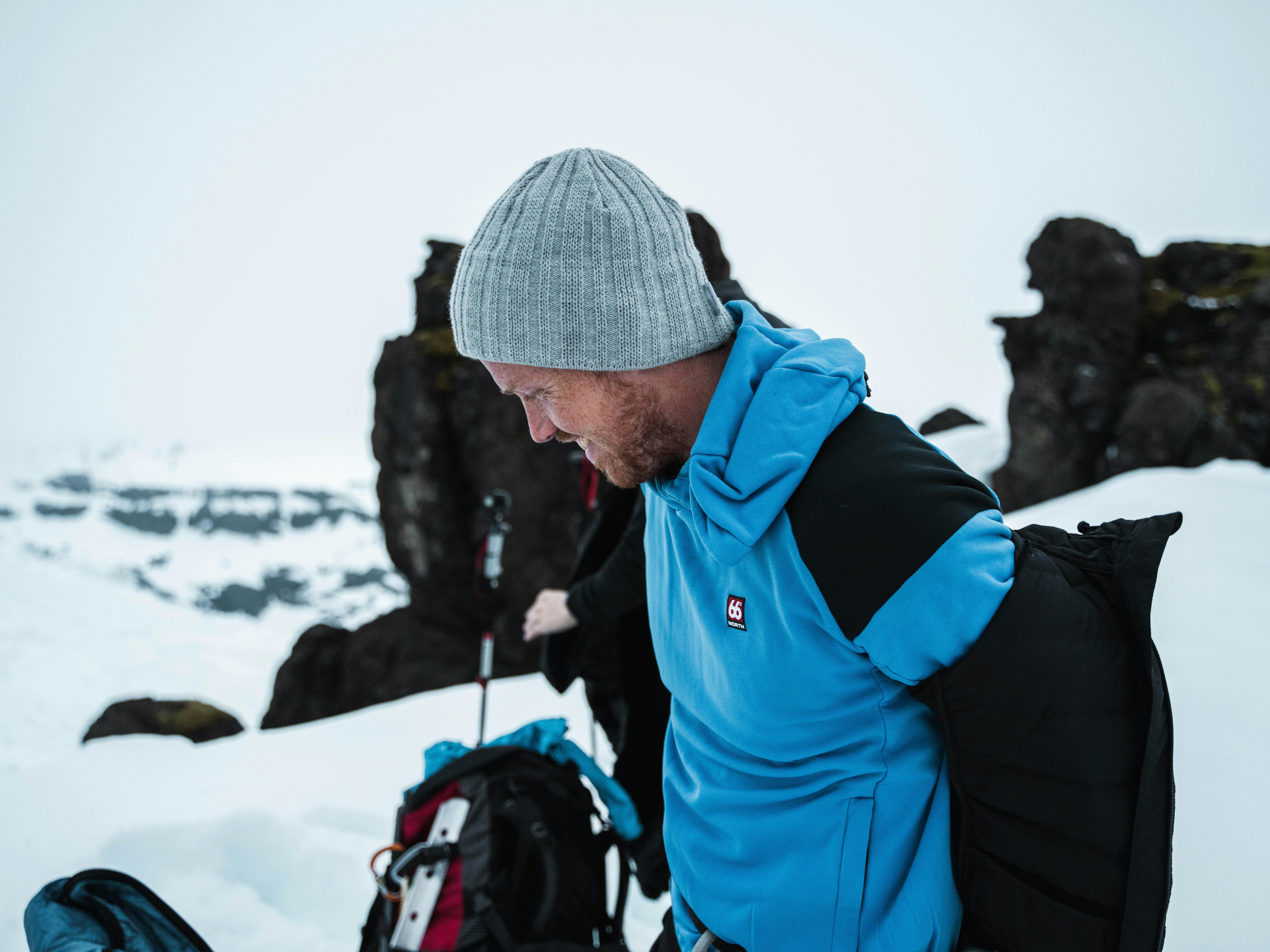
We were starting to fall behind schedule and the backpacks were growing heavy after only four hours of hiking.
At 7am on Monday morning, the 27th of April, we met full of anticipation for the upcoming trip and reviewed our plan. The goal was to start walking that same day, attempt to climb to an altitude of 800m on Hrútsfjall and set up camp there for night one. That way we would have a straight line to the summit on day two and would be able to camp our second night beneath Vesturtindur - the western peak of Hrútfjallstindar, and from there calmly make our descent on day three.
Driving into Skaftafell, we stopped by the road to catch an overview of the mountain conditions. It is one of the most beautiful roadside views in the country, and just so happened to give us the comprehensive view we needed of the snow and hiking conditions – it was the green light to get started. Then came the time to decide which route to take. After figuring out the route, the plan was to head out at 2 pm and walk for the next six hours.
We began with a hike along the side of Svínafell. Our backpacks were a bit heavy, but we managed to traverse the slopes and found our way onto the glacier with spent some time to check the route across. This was the big uncertainty for us, as we did not have precise information on whether the route was still possible, due to the land subsidence that had taken place after years of glacial retreat.
Arriving at Svínafellsjökull glacier, we found that it was still covered in snow. As it was impossible to detect the dangers of the glacier, we had no choice but to use a safety line for the traverse. We were starting to fall behind schedule and the backpacks were growing heavy after only four hours of hiking.
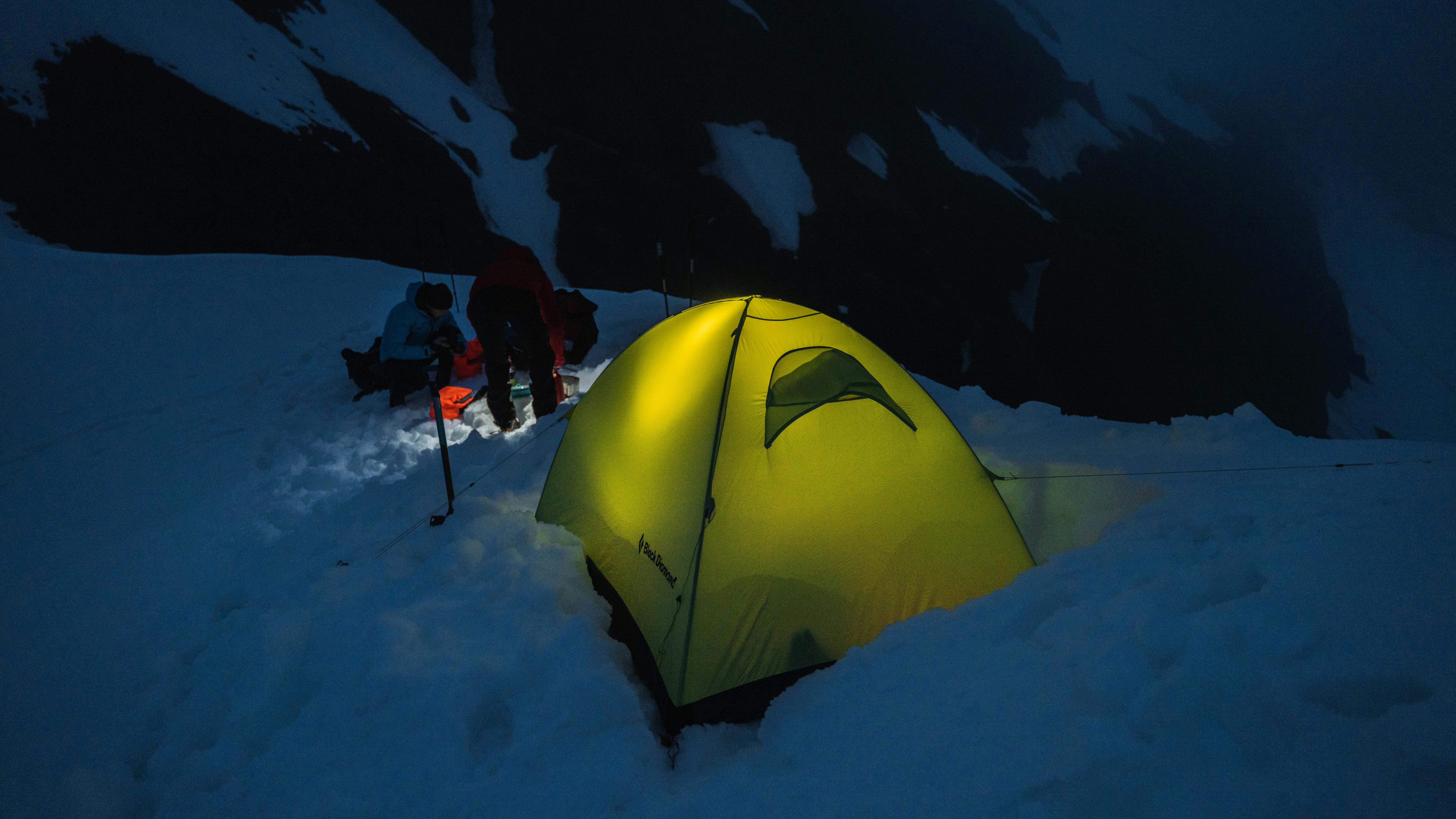
The campsite was magnificent and we started melting snow, setting up our tents and making ourselves comfortable.
Getting to the foot of Hrútsfjall was a victory in itself. We decided to continue up the slope and try to position ourselves well, so that we would have the opportunity to climb a narrow and steep ravine on the southern side. There, there is a risk of rock fall if the sun is shining, making the climb unsafe. We started our climb late on Monday and the sun had made the snow quite heavy for walking. We marched up the ridge and were knee-deep in snow. We were only able to travel very slowly with the heavy bags, but we set a goal to reach an altitude of 700m in order to be able to set up our tents on the ridge. It was safer to camp there due to the possibility of ice- and rockfall. There we could also check the route for the next day before dusk and make a plan accordingly.
When we arrived at our rest place, we were quite tired as it had been a long day. The campsite was magnificent and we started melting snow, setting up our tents and making ourselves comfortable. When we started to melt snow, we found out that the gasoline burner didn’t work. It looked like the pump had suffered some damage on the way up. We tried what we could to get it to work, as we had to melt 10 litres of water and the gas worked very slowly in the night cold. In the end, we did not succeed, no matter what we tried. Fortunately, we had brought extra equipment, without which we would have had to cancel the trip and head back. It took us three hours to melt the snow and the time was 1 am when we were finally able to rest.
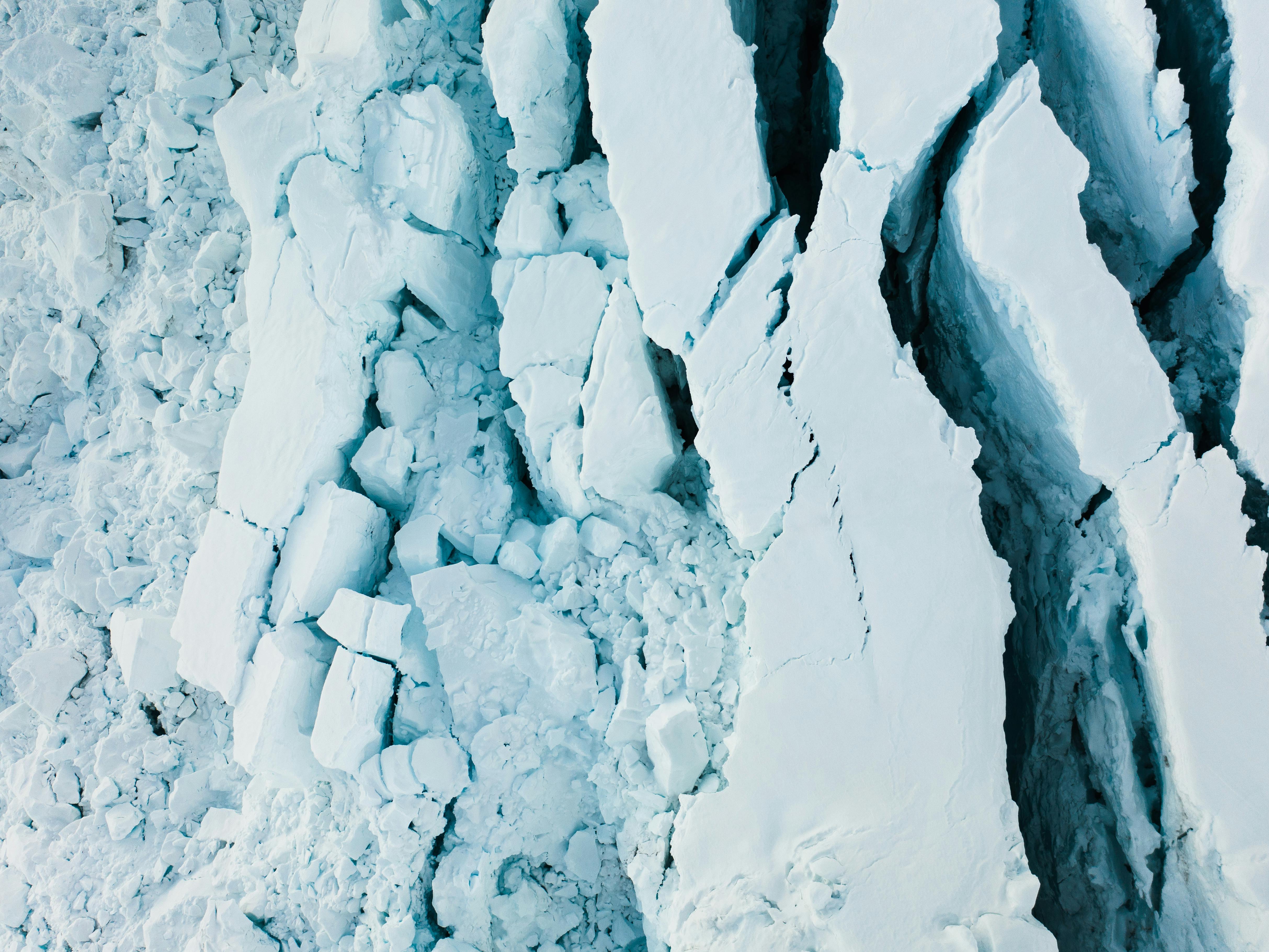
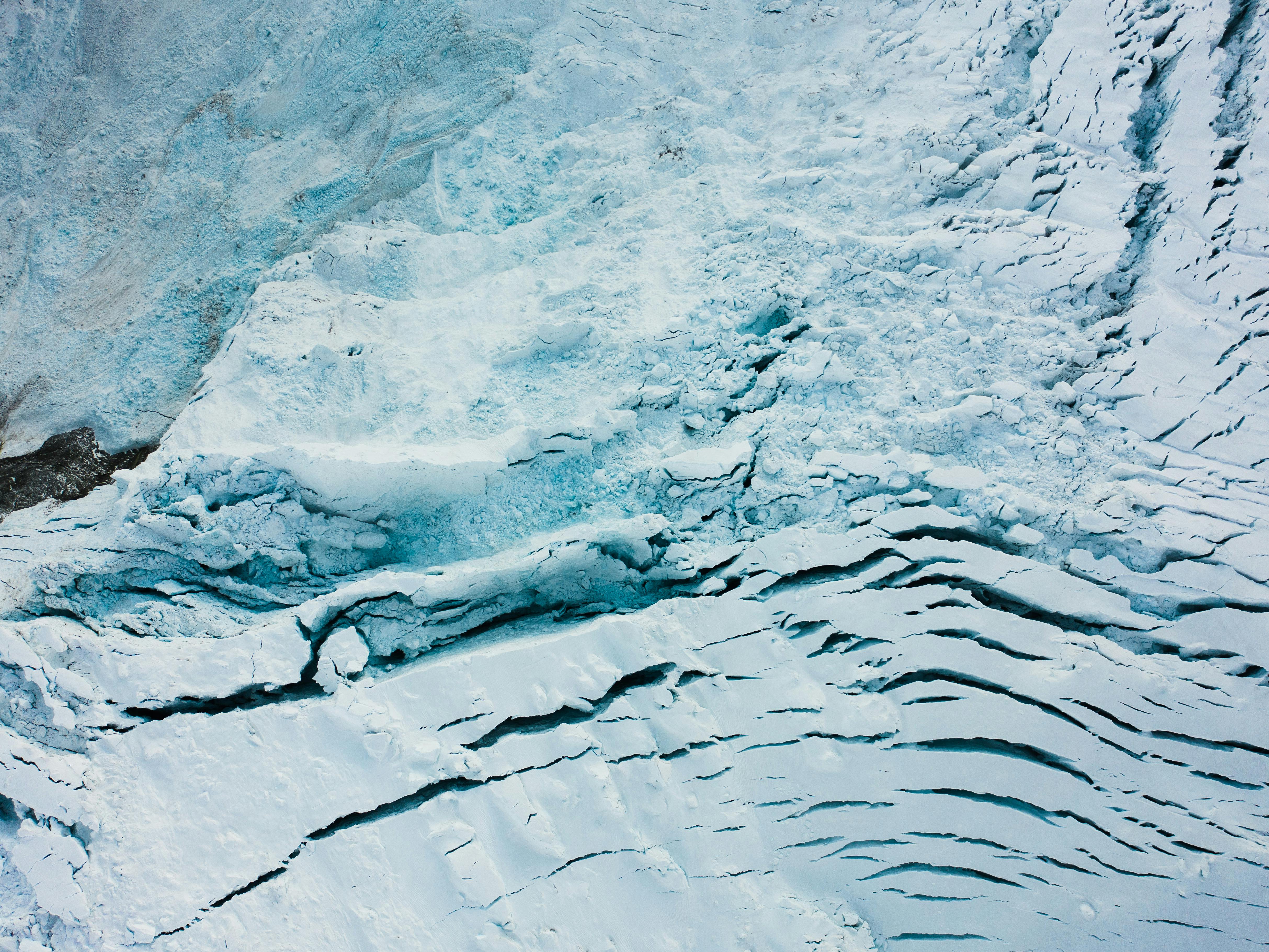
Climbing the Ram
Day 2
For a trip of this length, rest is vital, both for physical endurance as well as mental agility, especially when you need to make spontaneous decisions in challenging conditions. We therefore decided to sleep for two more hours the next morning and head out at 7 am. This delay would make the conditions a bit more difficult in the beginning, but we would still be able to climb the ravine before the sun hit the mountain face.
We woke to spectacular surroundings at our campsite. The views over Svínafellsjökull and Hvannadalshnjúkur were unbelievably beautiful. Despite the overnight frost, the snow was wet and heavy at the start of our hike that day, making progress a little more difficult. After two hours of walking, we reached the steepest part of the slope and were protected from the sun. The frozen snow was perfect for our travels.
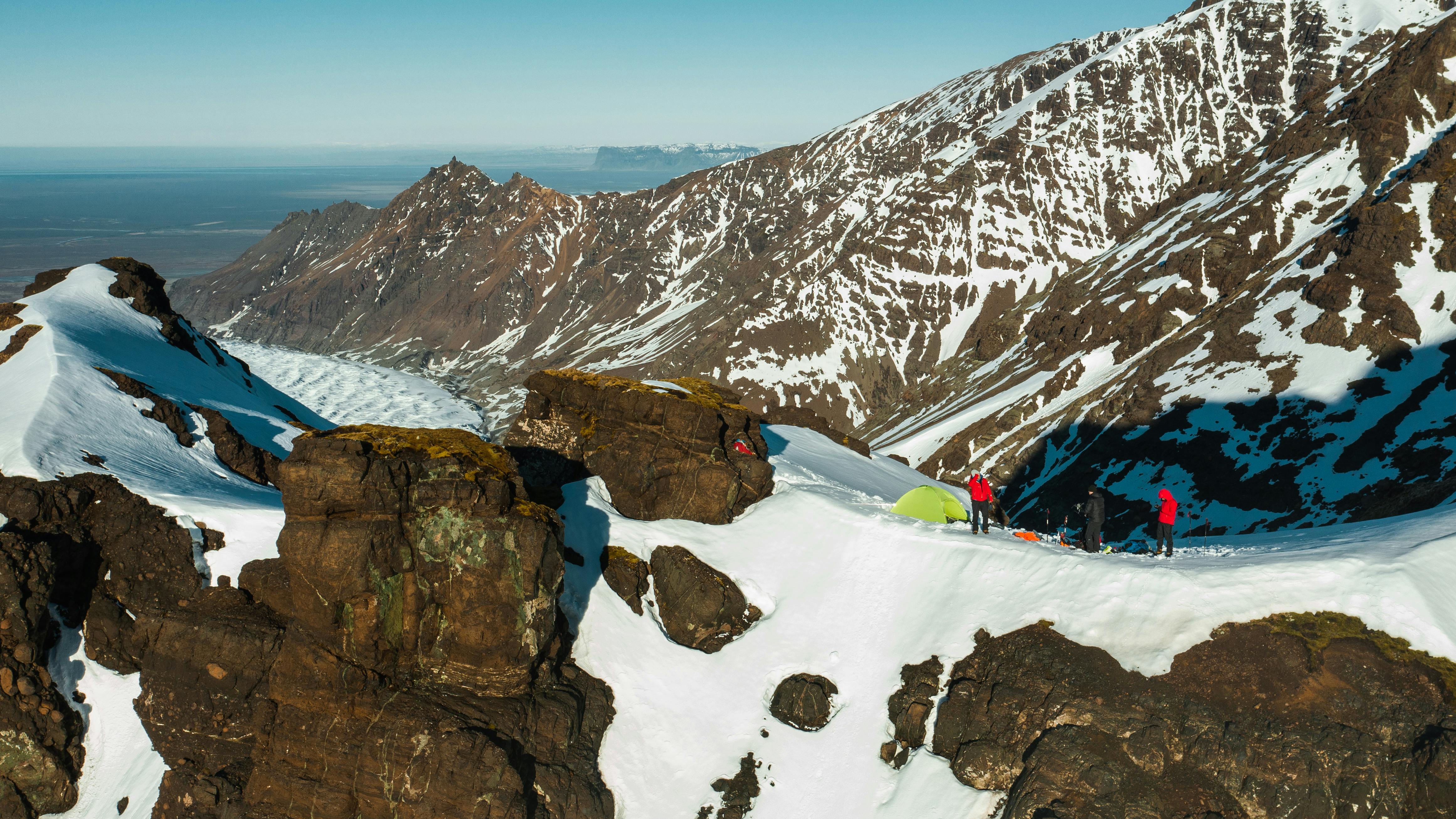
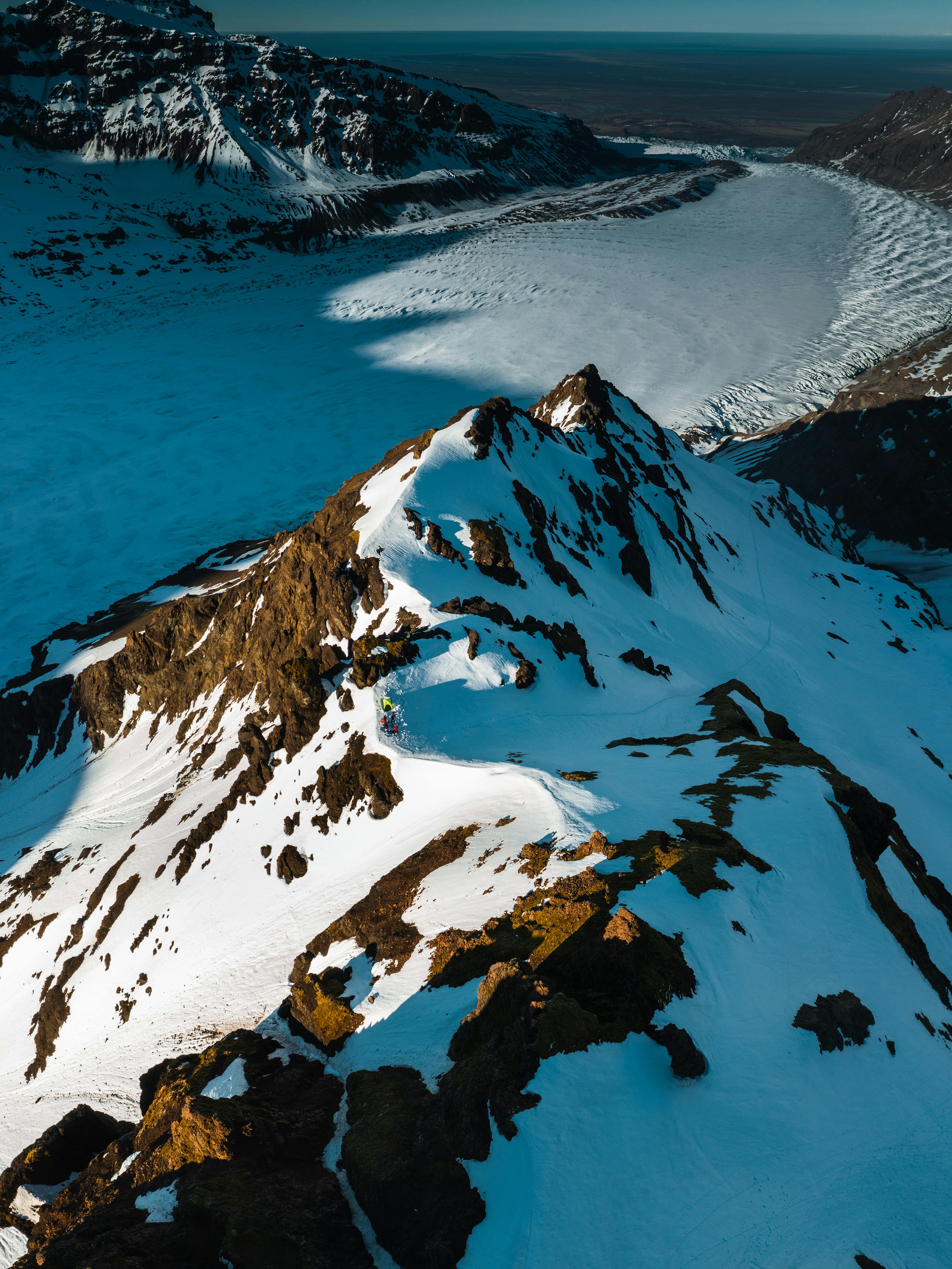
We woke to spectacular surroundings at our campsite. The views over Svínafellsjökull and Hvannadalshnjúkur were unbelievably beautiful.
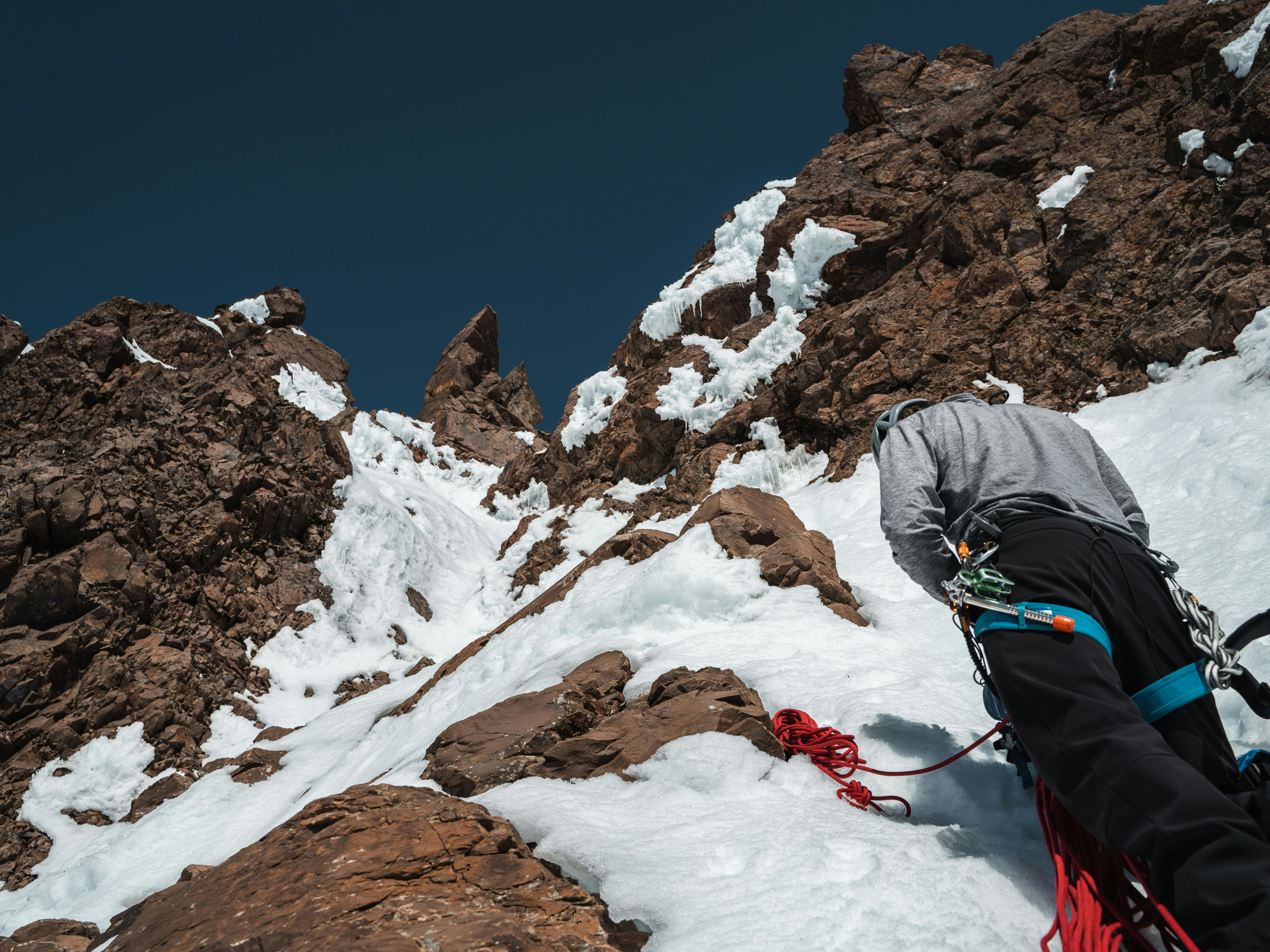
Gigantic icicles loomed over our planned route and it was too risky to attempt it because if the sun hit the ice, we would be entirely exposed.
The difficult conditions earlier that morning and our extra hours of sleep meant that we were now powering ahead.
We had to get up the steep side of Hrútfjall fast to avoid rockfall. Small rocks and pieces of ice started to fall, so we had to push hard to clear the section. This was exhausting for our team and our backpacks weren’t getting any lighter. We avoided the rockfall, but our hike was slow.
We then looked into plan B. It was clear that if we couldn’t be ahead of the sun any longer, we would have to turn back. Doing any different posed a risk not worth taking. We found a safe place where we could see the route that we had originally planned. Gigantic icicles loomed over our planned route and it was too risky to attempt it because if the sun hit the ice, we would be entirely exposed.
It was at this point that Benjamin spotted an ice waterfall up on the ridge. It was about 50m high, but the ice looked very good and in good shelter from any possible ice and rock fall. We decided to go for it.
We placed ourselves under the ice waterfall where it was safe and changed our safety line to accommodate for multi-pitch climbing. I took the lead position and started climbing the waterfall first. Once I was up, I set up a belay system and the guys climbed behind me while I safeguarded from the top. The climb was incredibly fun, the ice was ideal, and we made it to the ridge without any issues. Sitting on the ridge, we ate well and enjoyed a great view. Þorsteinn told us of his thoughts before beginning to ice climb – what the heck am I doing here on this vertical wall, what have I got myself into! By the top of the climb, he was thrilled with what he’d accomplished.

It was at this point that Benjamin spotted an ice waterfall up on the ridge. It was about 50m high, but the ice looked very good and in good shelter from any possible ice and rock fall.
After joyously discussing our efforts on the ice section, it was clear that the ravine and the climb had taken a lot of energy out of the group. We decided to keep going up past the icefall and regroup there.
We needed to cross steep slope before we would be able to push straight up to camp 2, but again this took longer, because of the backpacks and our focus on safety. With most of the steep slope behind us and beneath Suðurtindur (south peak), we checked our water reserves. It was clear that we had neither the energy nor water to keep to our schedule and it was getting late. By 3pm, we stood an altitude of 1500m with approximately 3 hours of climbing left to reach the summit.
On the first night our gasoline burner malfunctioned, forcing us to use our backup burner to melt water. At this stage of the climb, it was important to strategize with the water reserves. First we had to ensure that we had enough water to last us through next day for the descent before we could think about melting water for the summit push that evening. It was highly likely that we would have to turn back if we were to run out of gas. When we had finally melted enough water for the descent, we decided to rest there a little longer, eat, set up camp and gather energy. After the tent was set up, we managed to fix the gasoline burner, which meant we could melt a lot of snow and ensure enough water supplies for both the summit push and the descent down the mountain, it was a huge relief. Surrounded by a vast glacial world of icefalls, frozen walls and high peaks, we established the tent in one of the most amazing surroundings I have ever camped. The weather was fantastic, the air was completely still, and we could see clouds floating beneath us.
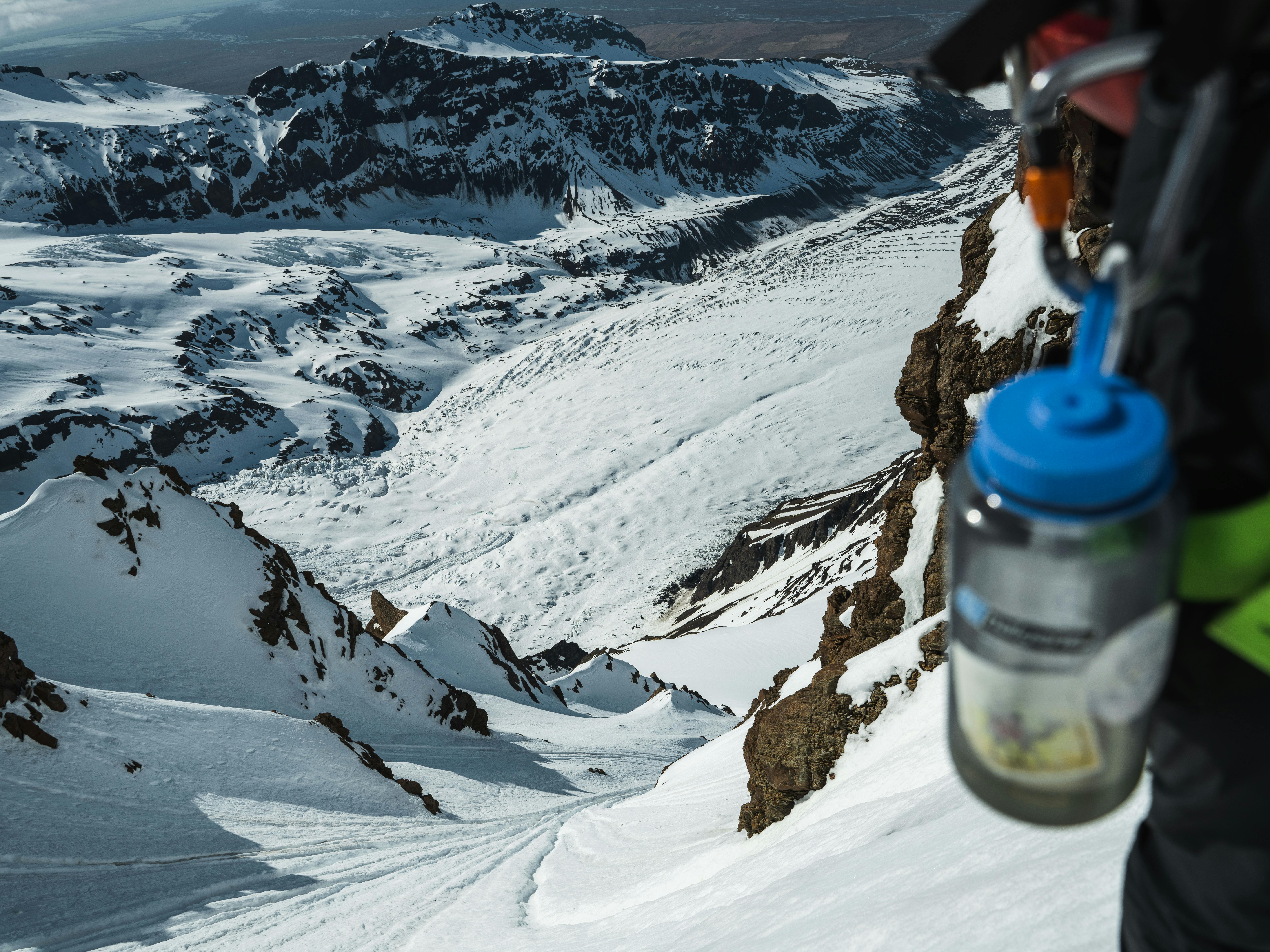
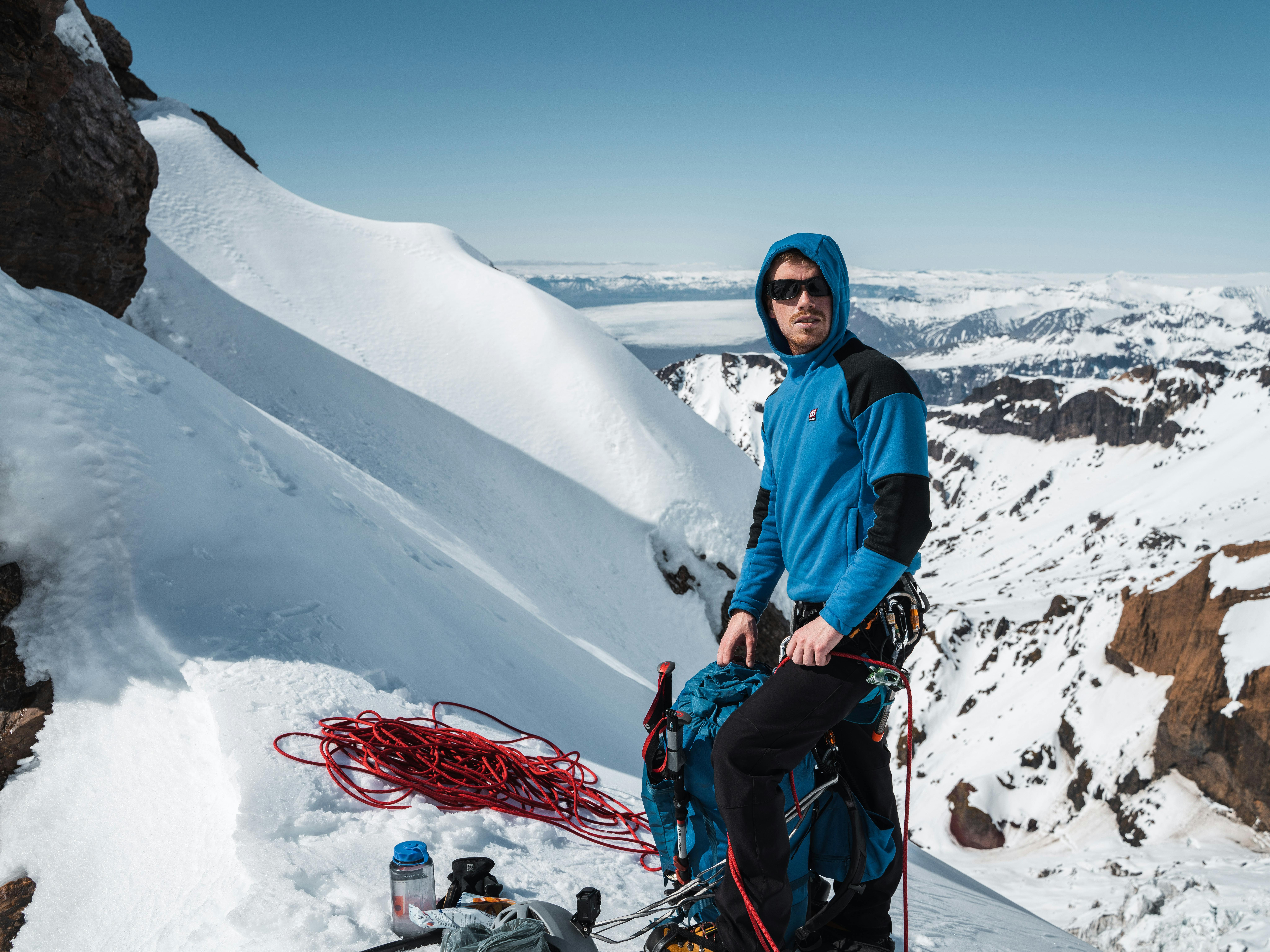
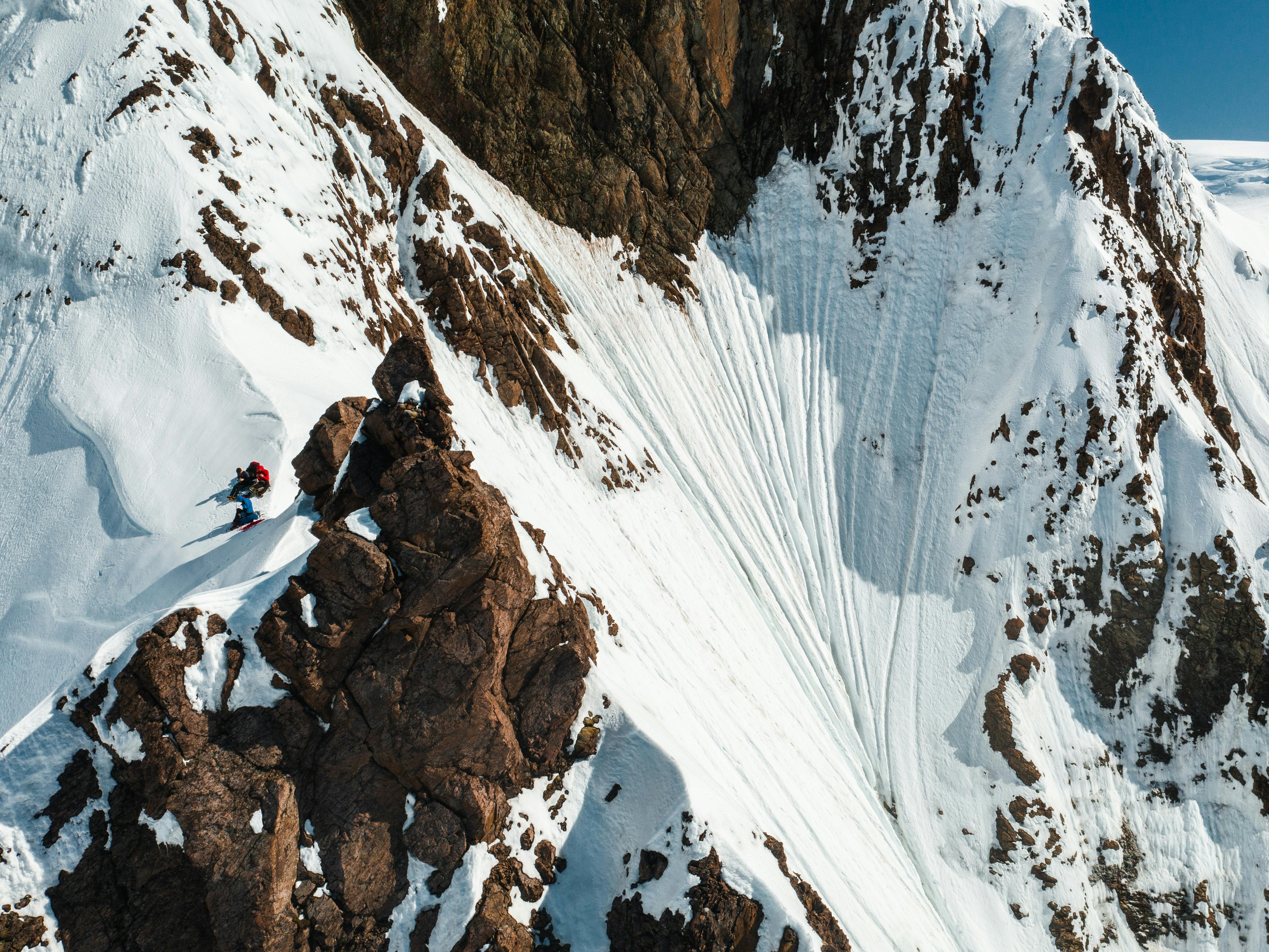
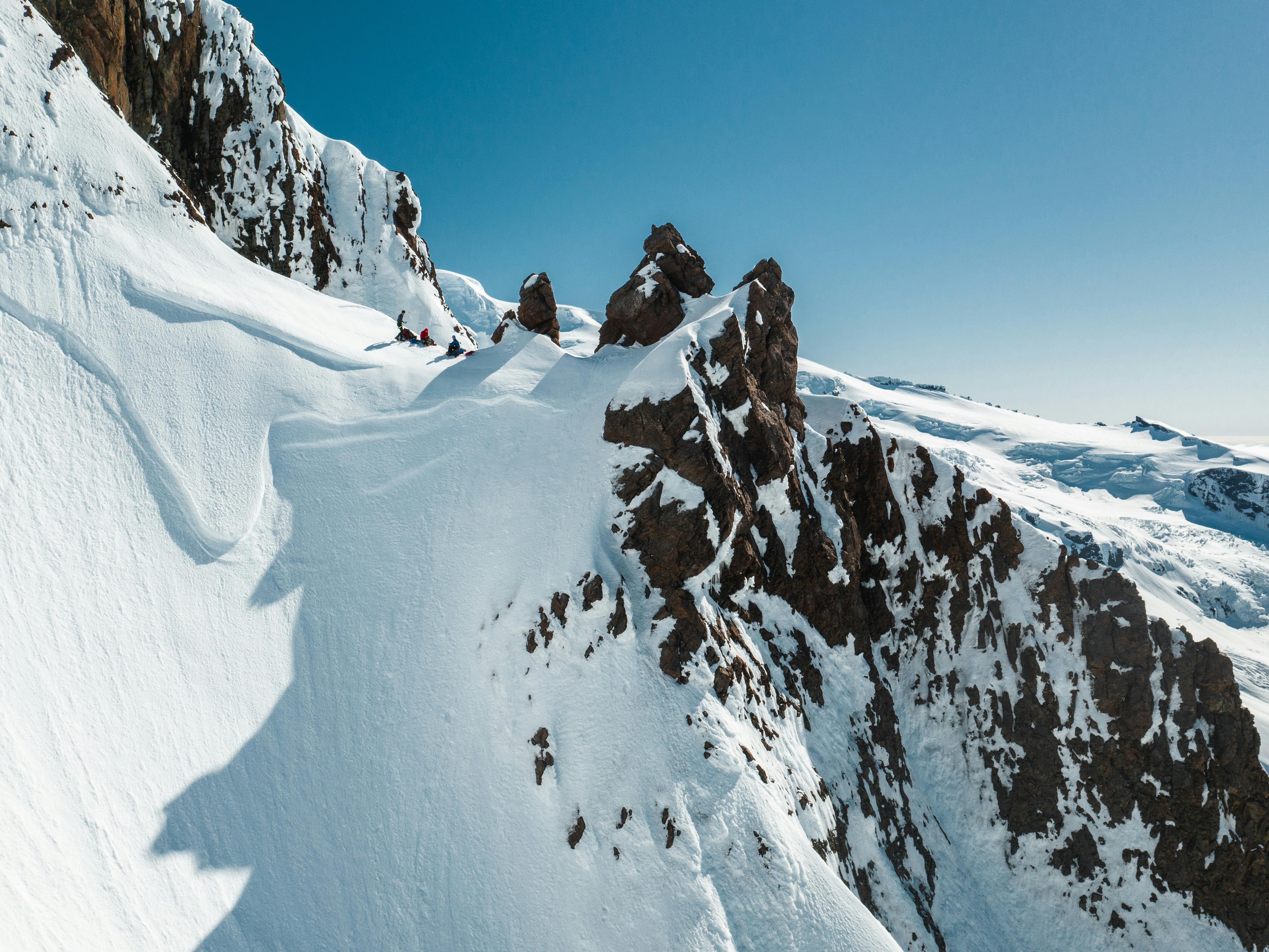
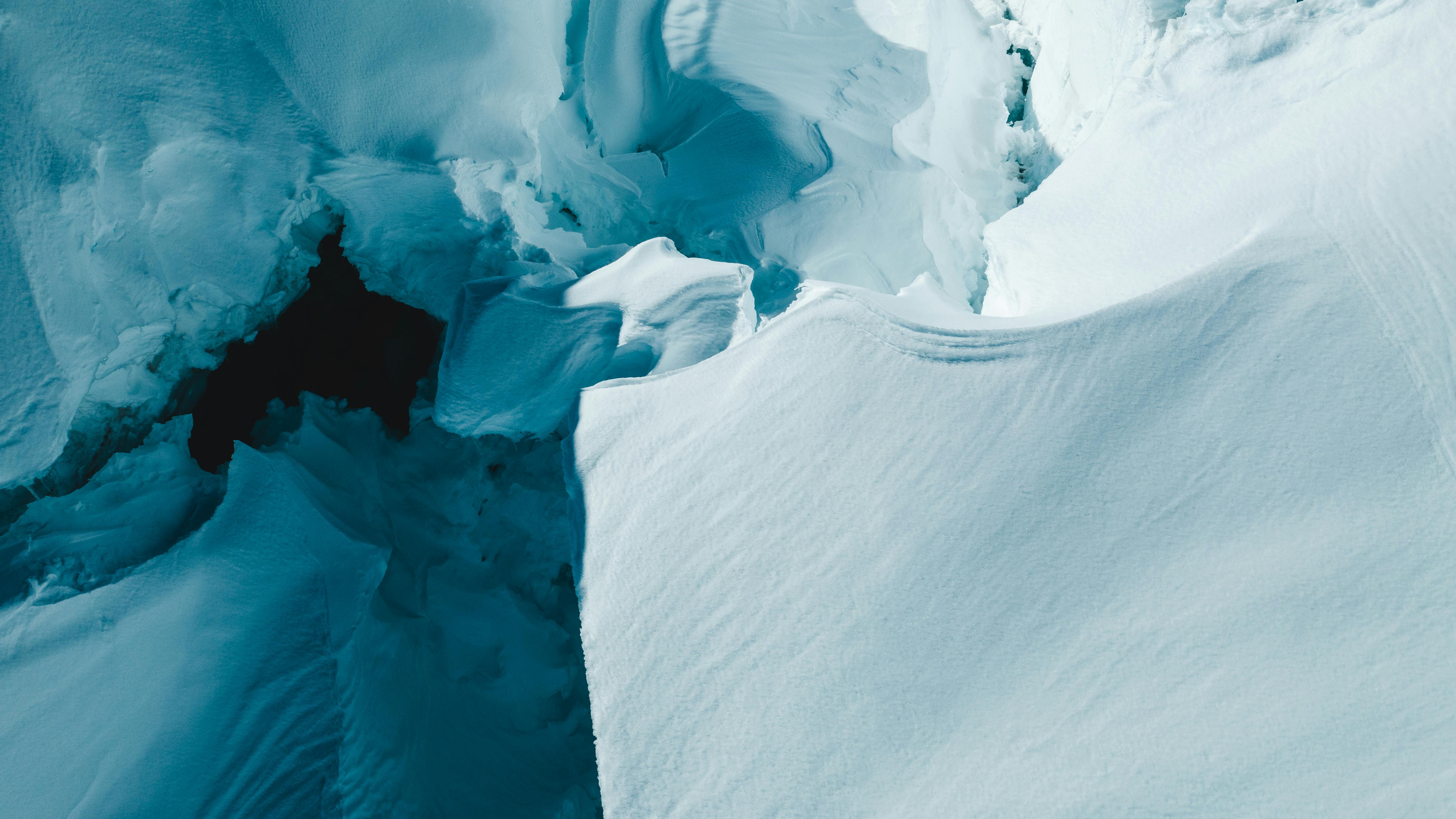
Climbing the Ram
The Summit Push
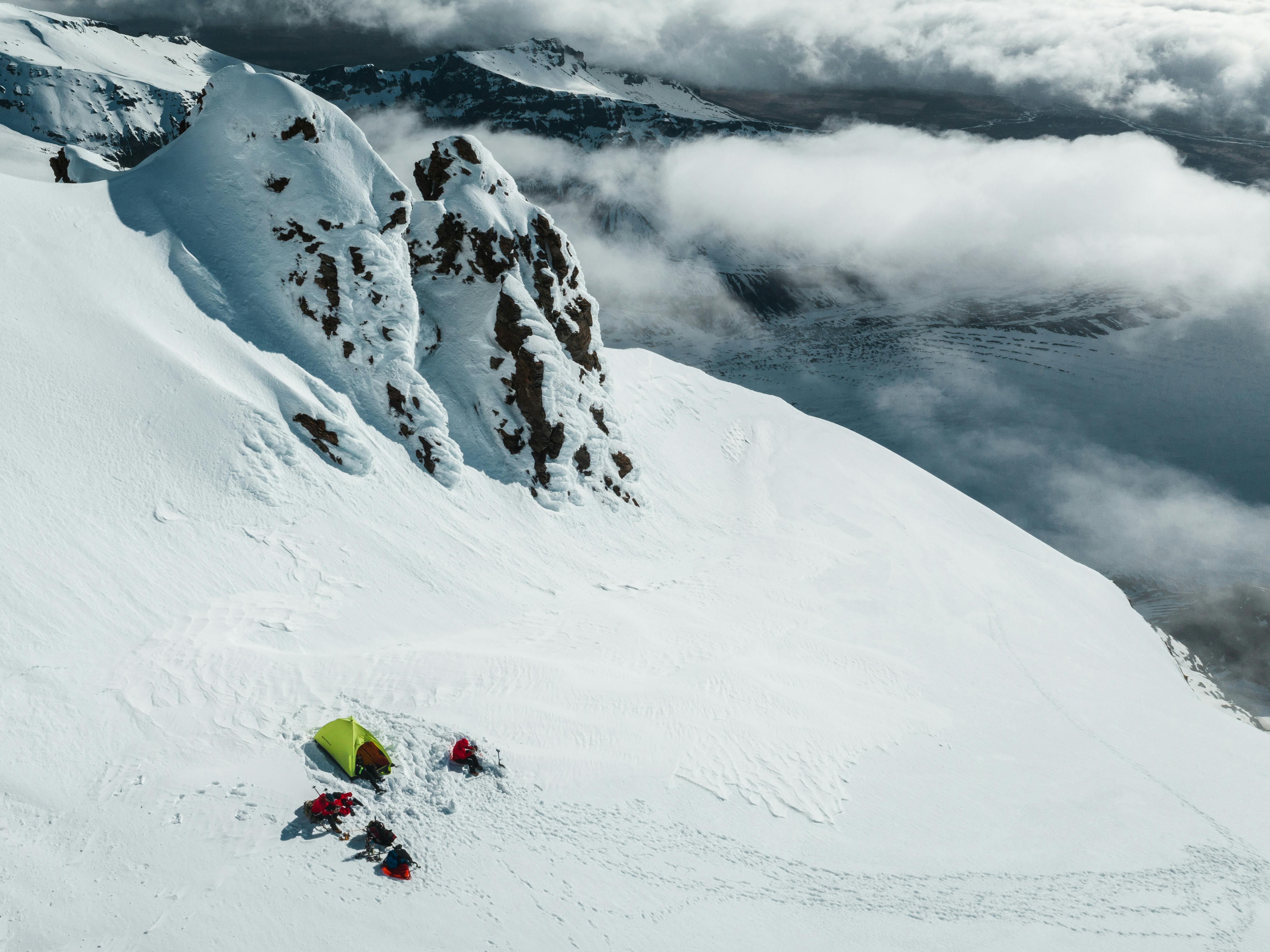
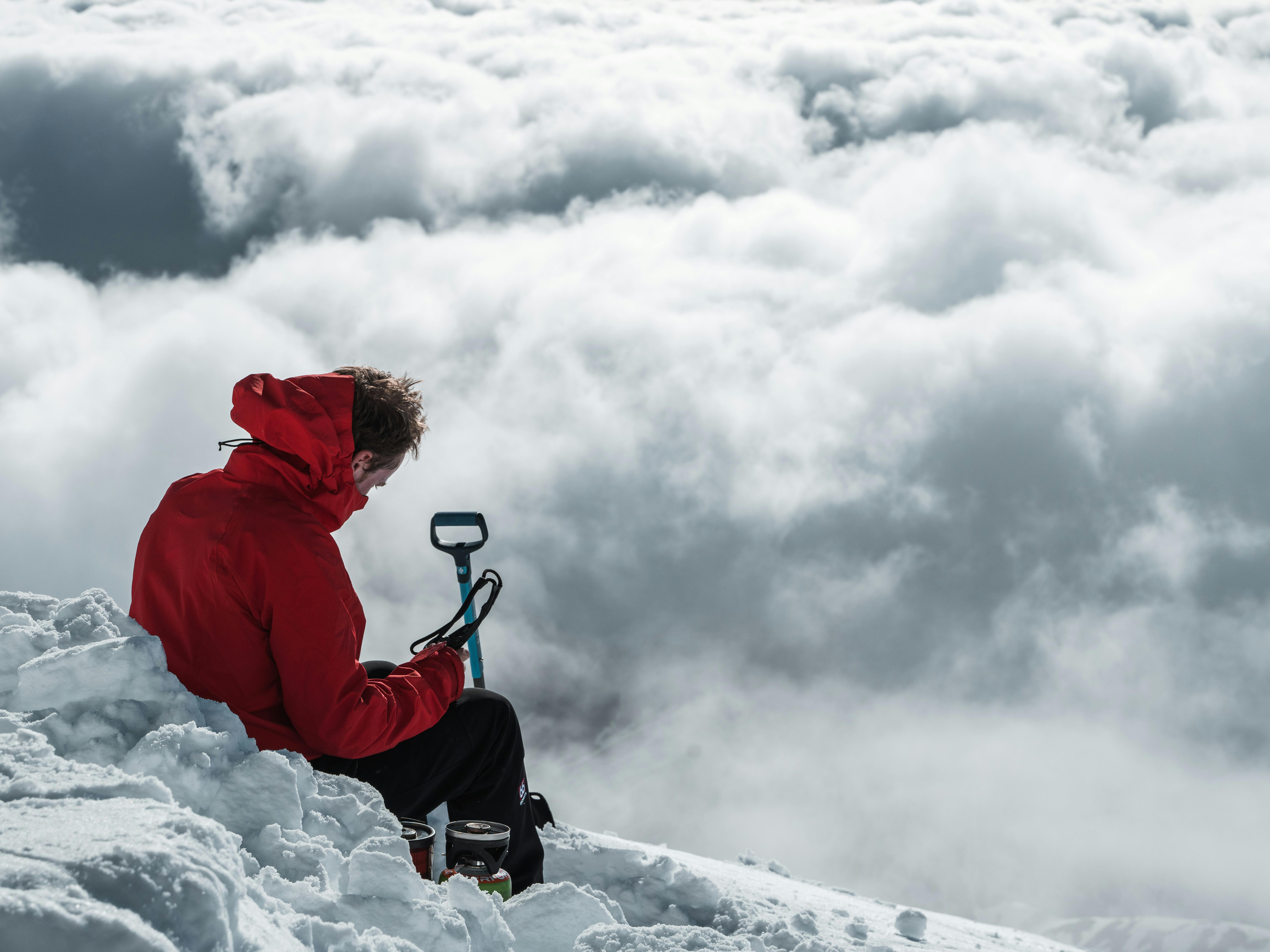
The weather was fantastic, the air was completely still, and we could see clouds floating beneath us.
After resting and eating well, we decided to push to reach the top around sunset. This is a very unique time to be on the summit and has the potential for an incredible view of the glowing sun as it sets over the glacier. As we’d already set up the camp, we could stash our heavy gear and travel light for the summit attempt. Our hike on the glacier went well, climbing through a maze of crevasses using any safe snow bridge we could find. In some areas, the crevasses were open and exposed, offering a view deep down into the glacier. It is quite a daunting site to say the least.
Reaching the final climbing section before the summit, we had to ascend a very steep ridge. With the ridge dropping off beneath our feet, we travelled slowly and carefully as there was absolutely no margin for error in that section. We switched back to multi-pitch climbing and took turns climbing up the ridge, communication was the key element here. After two rope spans and some careful climbing, we had made it achieved our goal and were finally standing on the western summit of Hrútfjallstindar.

We travelled slowly and carefully as there was absolutely no margin for error in that section.
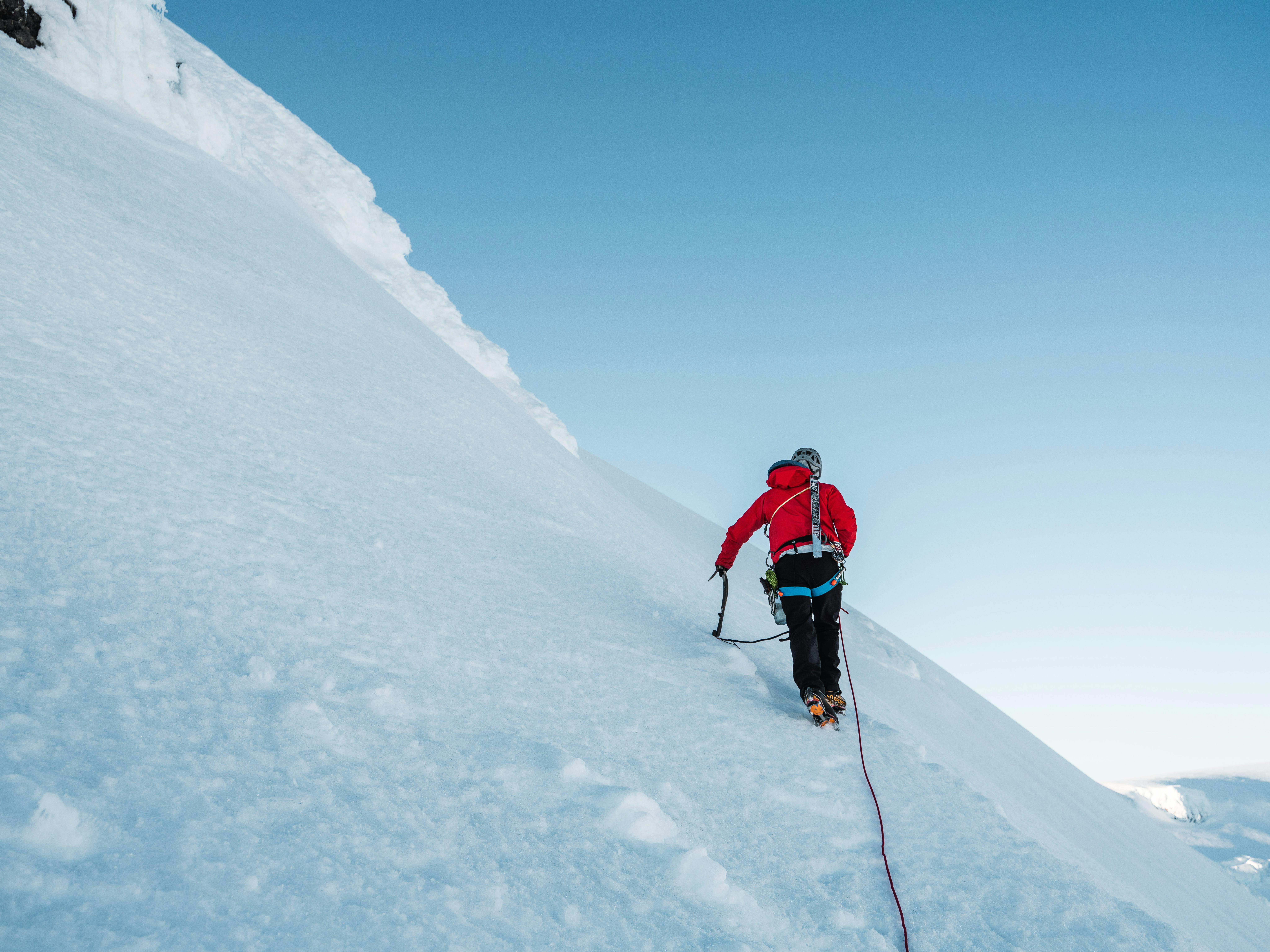
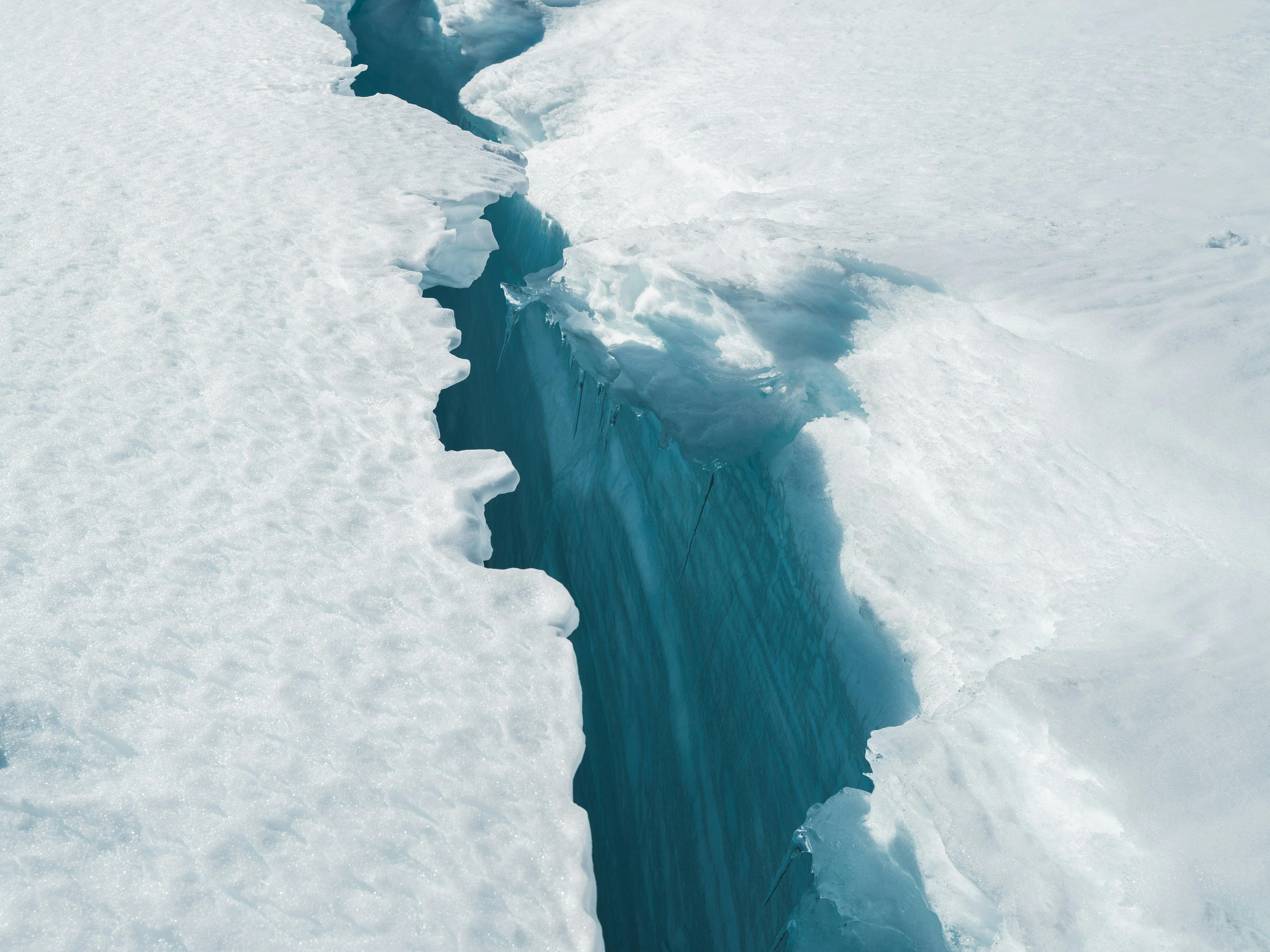
Our hike on the glacier went well, climbing through a maze of crevasses using any safe snow bridge we could find.
With a layer of cloud below us and Iceland’s highest mountain peaks towering gracefully around us, we watched as the sunset began to saturate the clouds and ice in an incredible evening glow of red, pink and orange hues. Though windy and freezing cold on the summit, the opportunity to photograph the surrounding landscape could not be missed, so Benjamin and Þorsteinn got out their cameras and drones to documents the magnificent view while we savoured our hour on what felt like the top of the world.
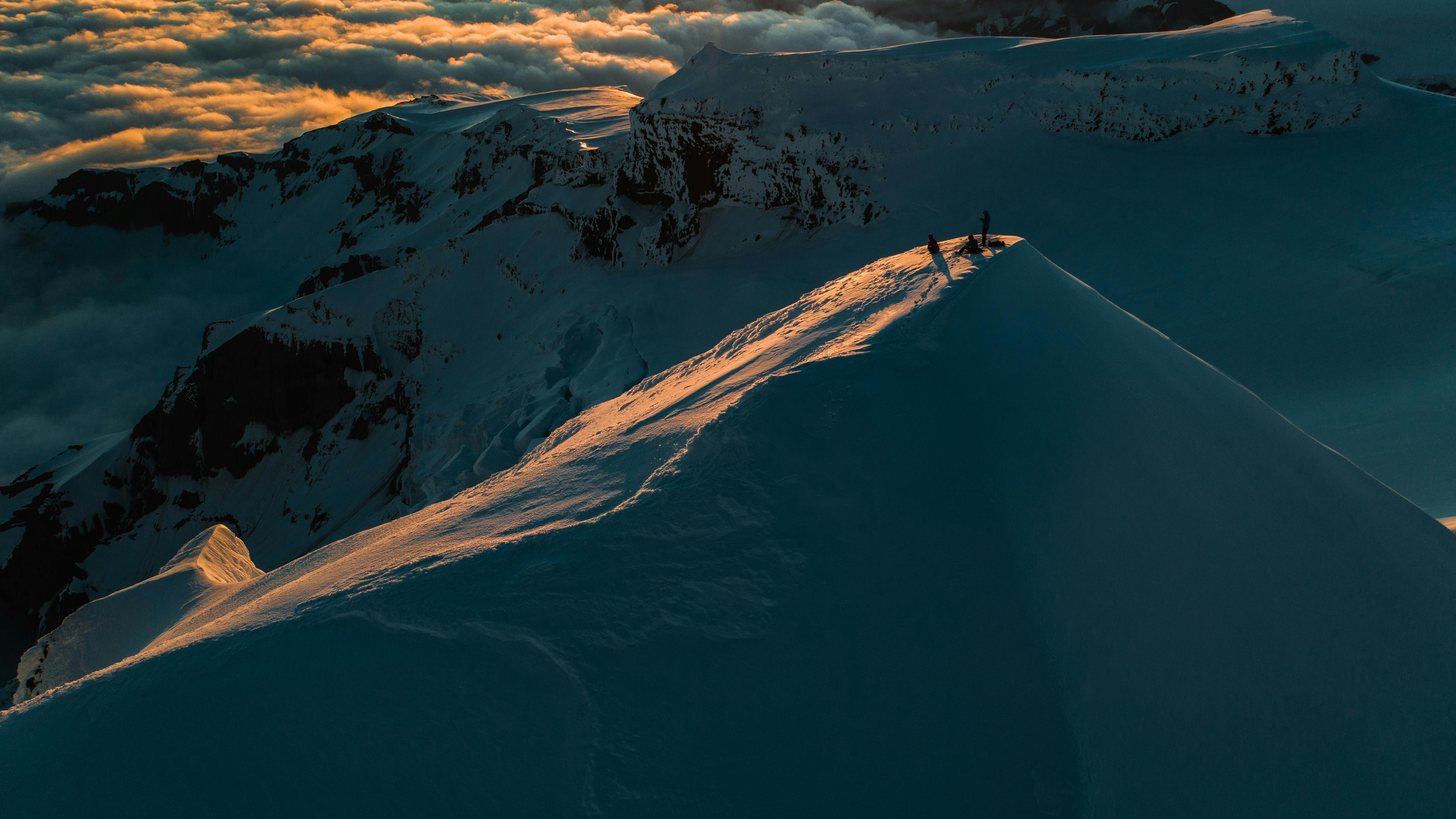
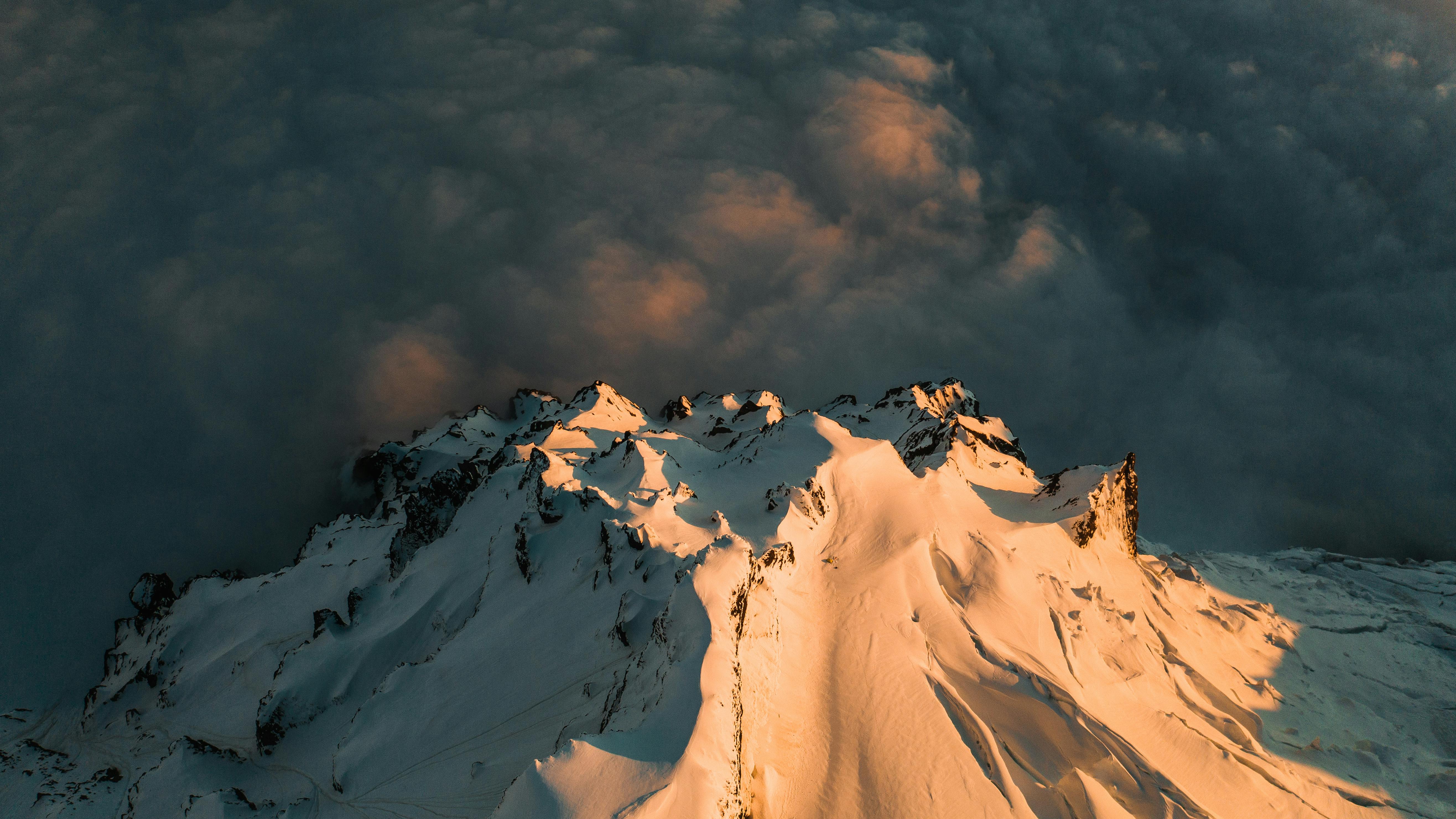
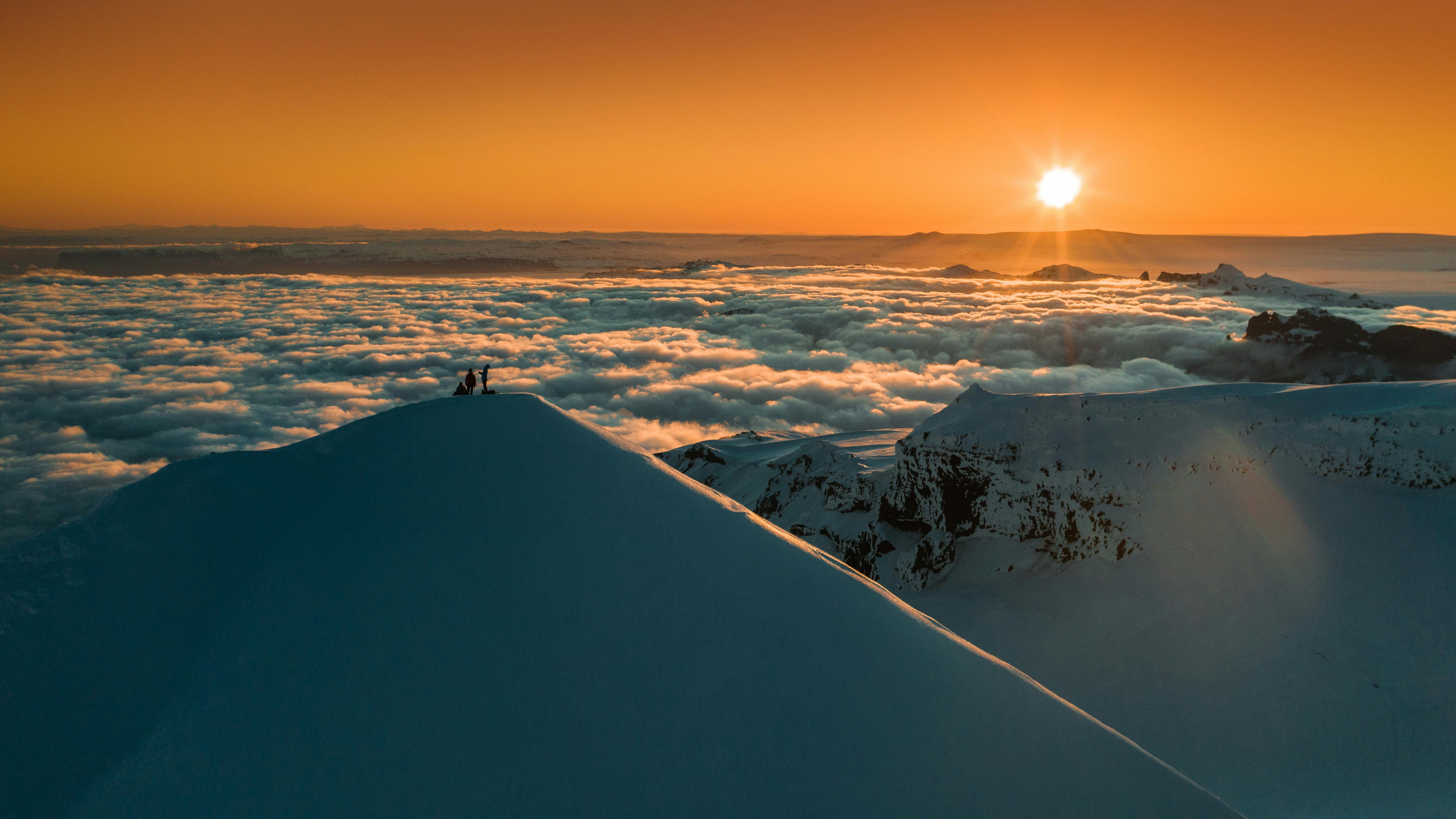
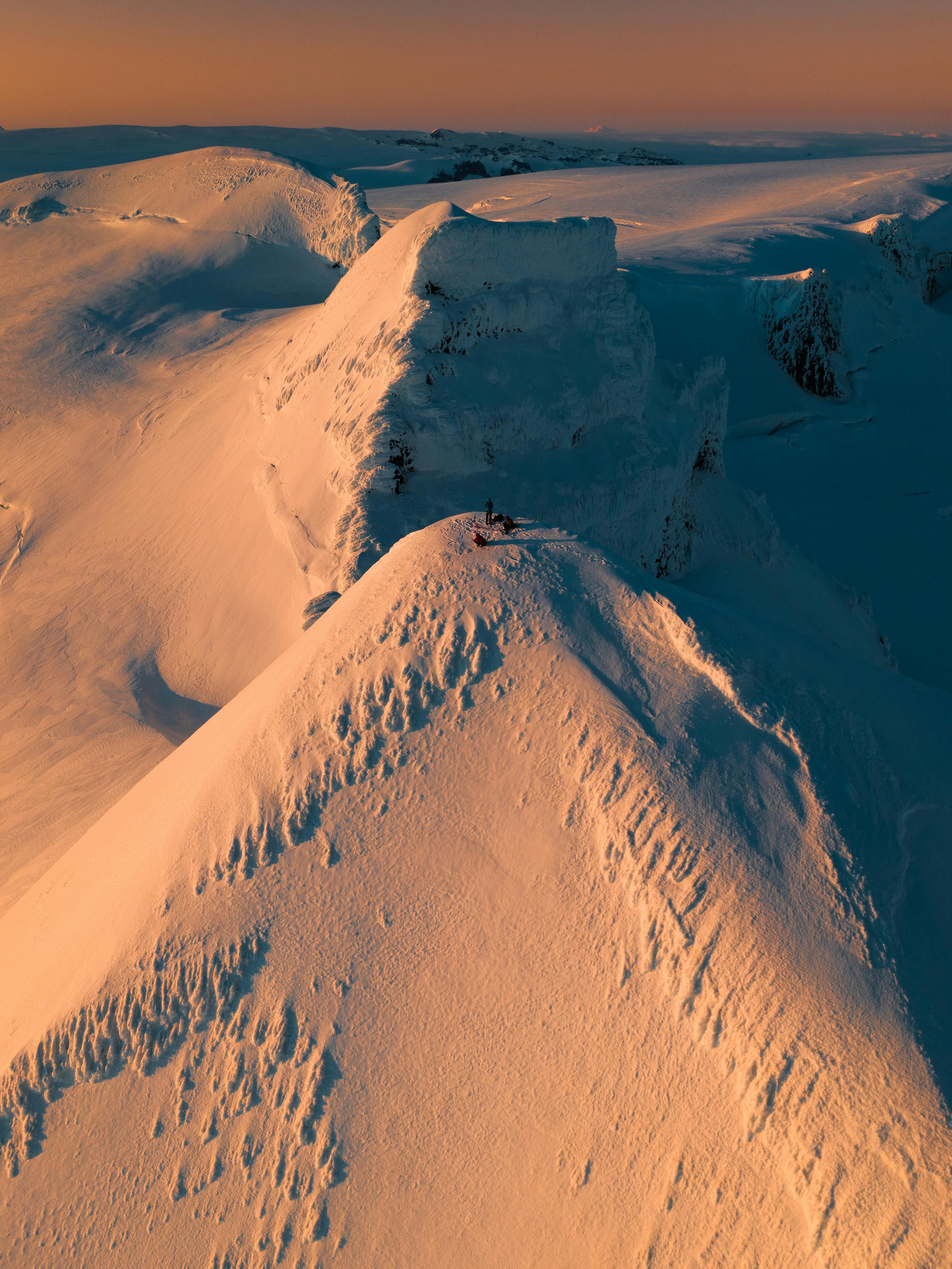
With a layer of cloud below us and Iceland’s highest mountain peaks towering gracefully around us, we watched as the sunset began to saturate the clouds and ice in an incredible evening glow of red, pink and orange hues.
Even though the peak had been conquered, we needed to keep focused for the challenging trip down the mountain. The sun was setting and the dark blue hour was kicking in, so we needed to use the last rays of sunlight for our downward climb. We down climbed in the same style, working one by one while securing the line to make sure no one would slide down the steep ice hill. We lowered ourselves down, traversing with an incredibly beautiful view down to the clouds. After securing ourselves with three 60m rope spans, the hiking conditions became much simpler. We were able to follow our tracks from the ascent back down to the camp site. Reaching camp at nightfall, the team was in good spirits as we recounted the almost unbelievable events of the evening. Whilst preparing our dinner, a spectacular display of northern lights danced across the sky. It was brief, but this moment truly signified how lucky we’d be on the trip – everything had gone to plan.
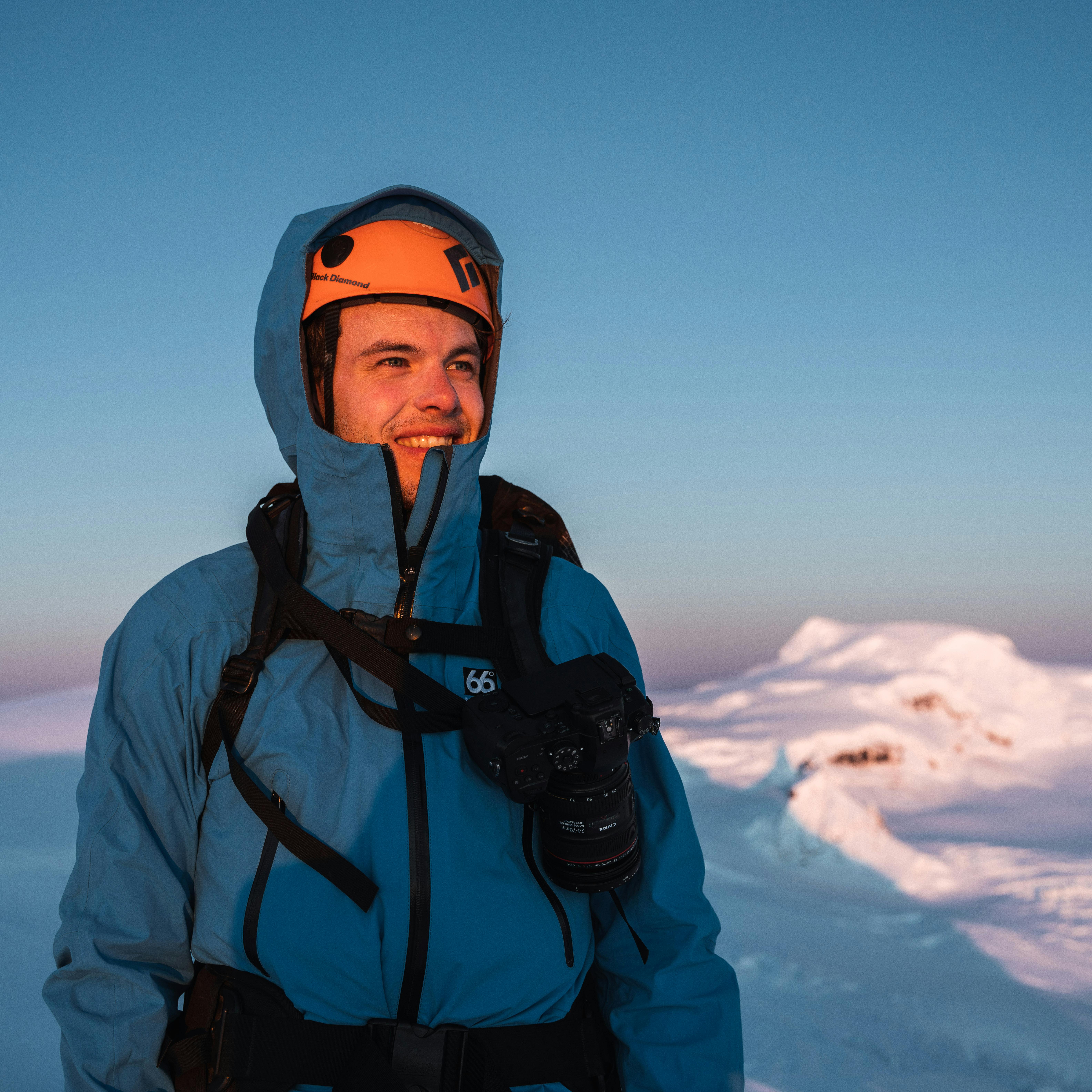
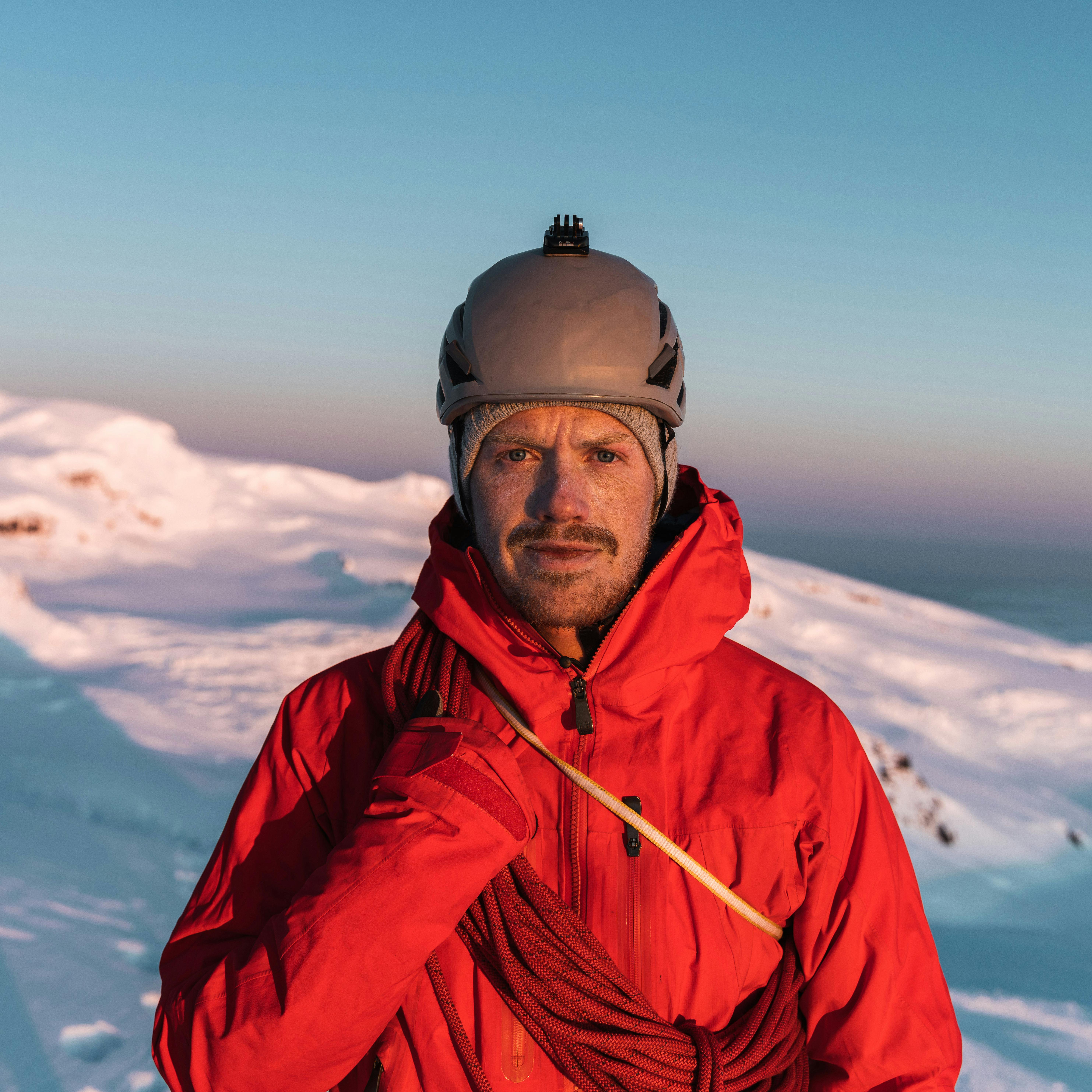
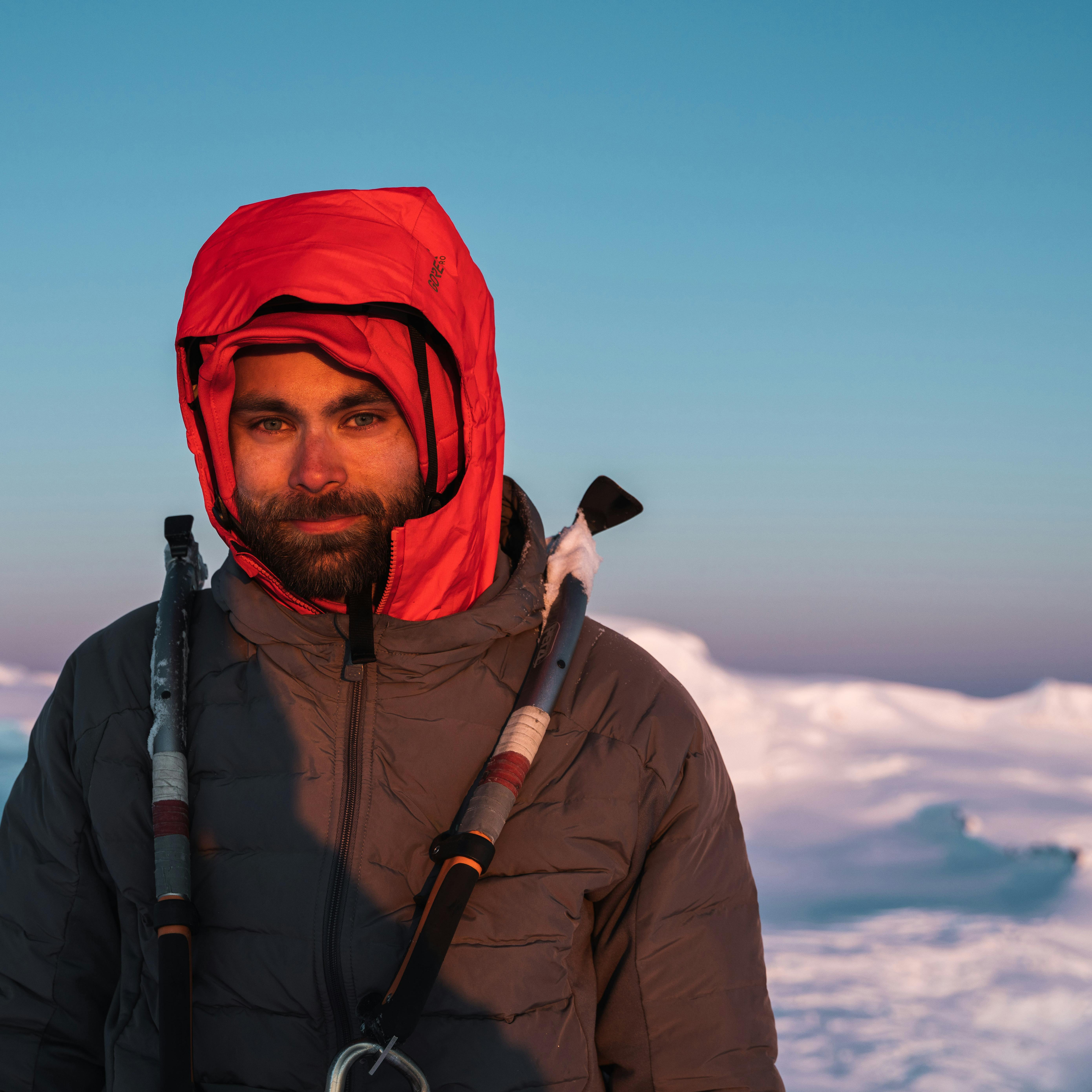
Þorsteinn, Siggi, Benjamin
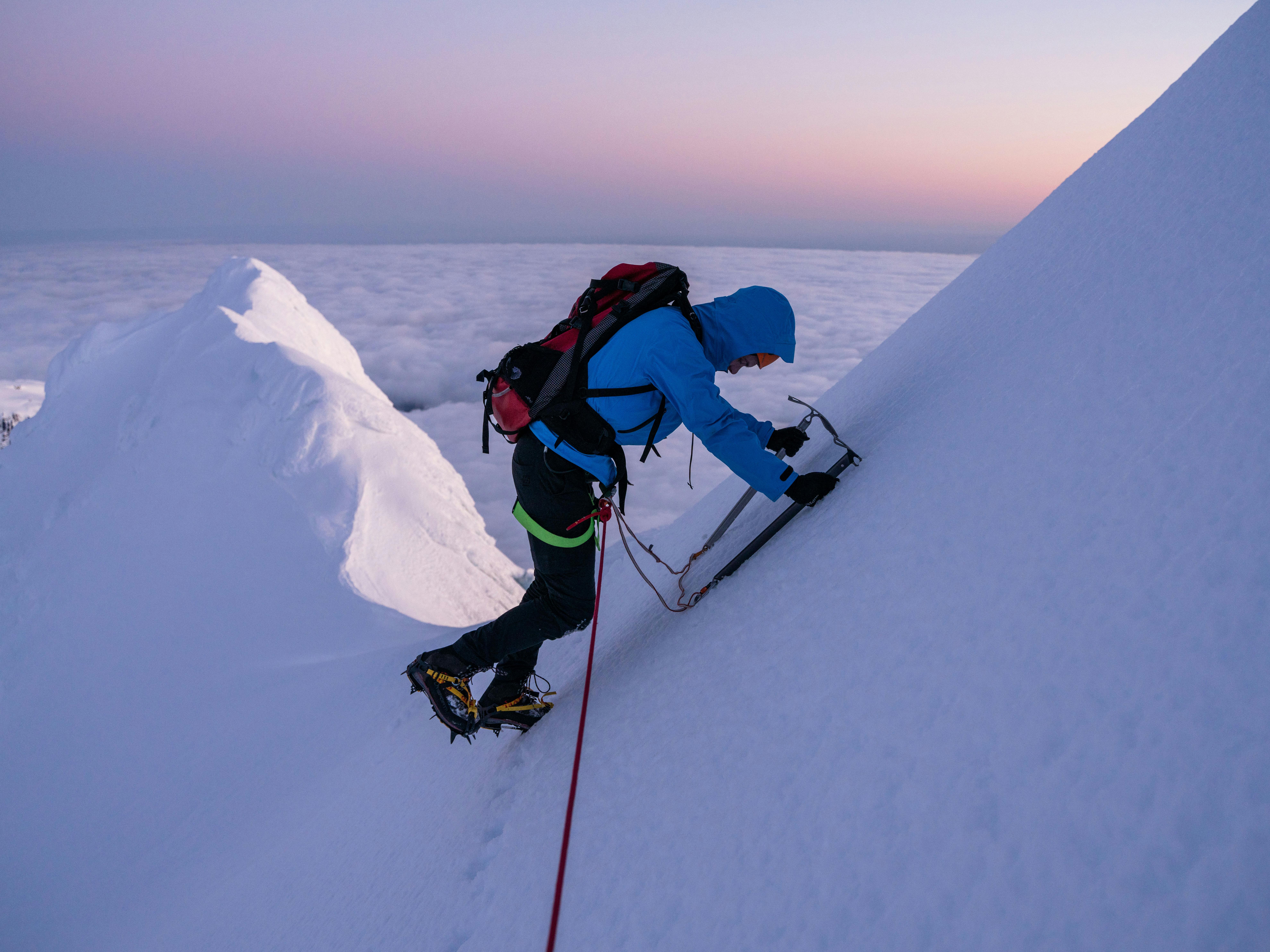
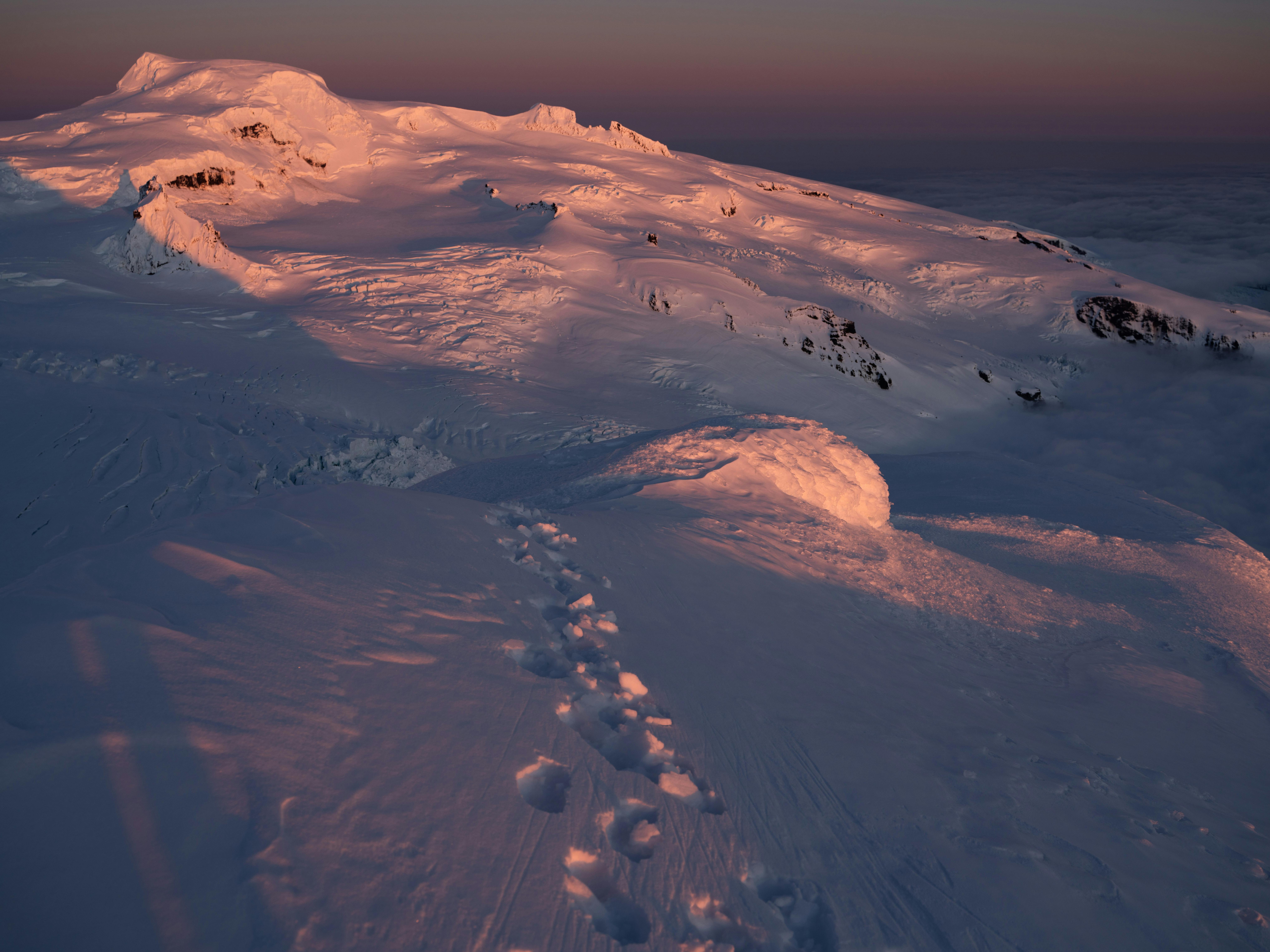
The sun was setting and the dark blue hour was kicking in, so we needed to use the last rays of sunlight for our downward climb. We down climbed in the same style, working one by one while securing the line to make sure no one would slide down the steep ice hill.
Climbing the Ram
Day 3
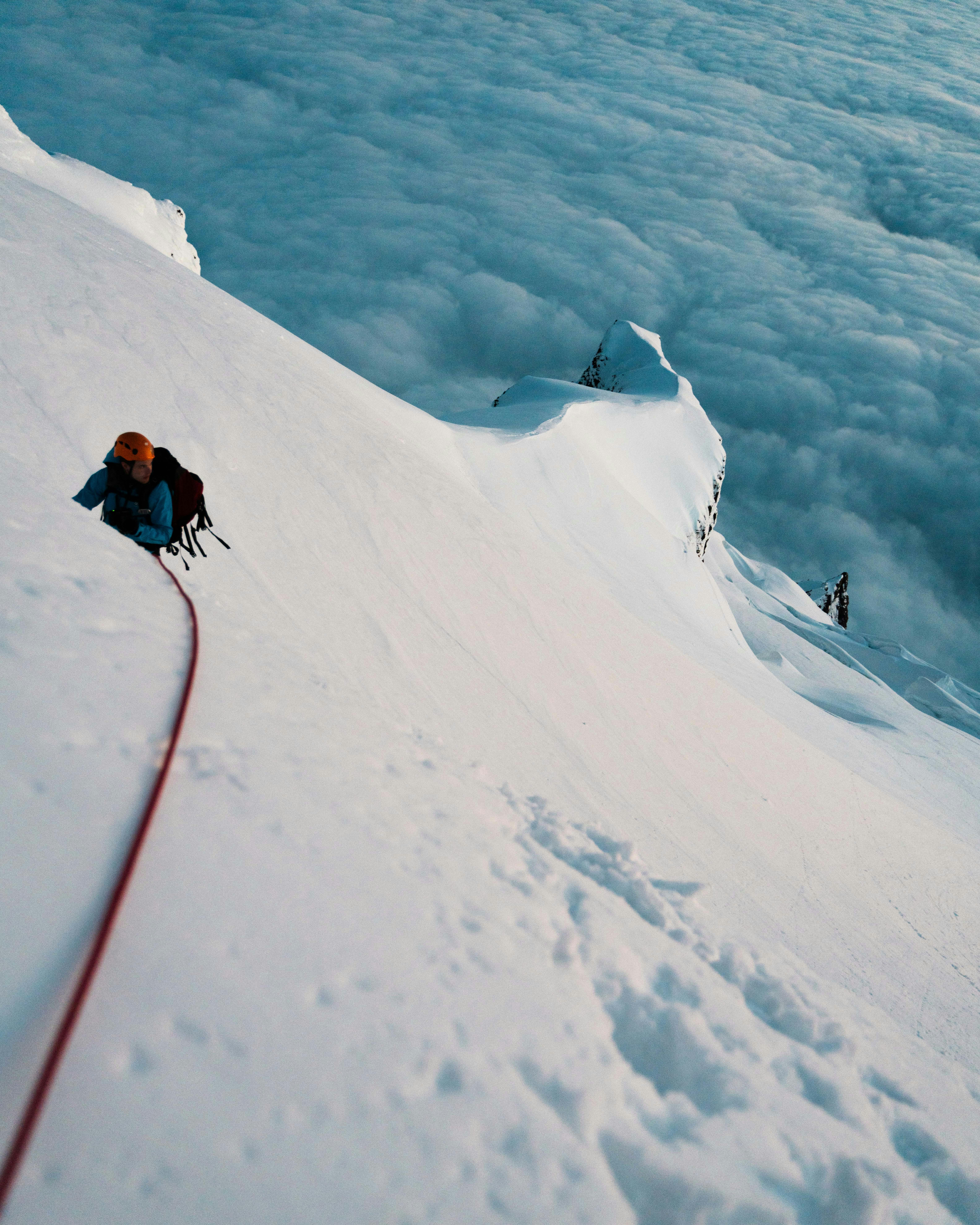
Waking up to another clear and still day on the glacier, it quickly became apparent how rare this weather window was. Three days of perfect calm conditions in a row, the climb was simply just meant to happen.
We decided on a rather simple way down the mountain, descending the regular climbing route via the peak of Hátindur. This allowed for some extra sleep in the morning and with such an incredible view, we were in no hurry to pack down our tent and gear. We made our descent with perfect weather, skies were clear, winds were still, the snow was nice for walking and the snow bridges safe. It took us around 7 hours with our backpacks still stuffed full and heavy despite having finished most of our food. After finally reaching the end, returning to sea level at the base of Hafrafell around 4pm, a feast was waiting for us in Svínafell, courtesy of Þorsteinn’s wonderfully accommodating family. We discussed the trip back and forth and everybody agreed that this had been a well-executed trip, smart decisions had been made with safety as the guiding principle. That feeling is extremely important after making big plans. We reached our goal, successfully climbing to the summit whilst Þorsteinn and Benjamin documented the entire journey to share with our fellow outdoor enthusiasts.
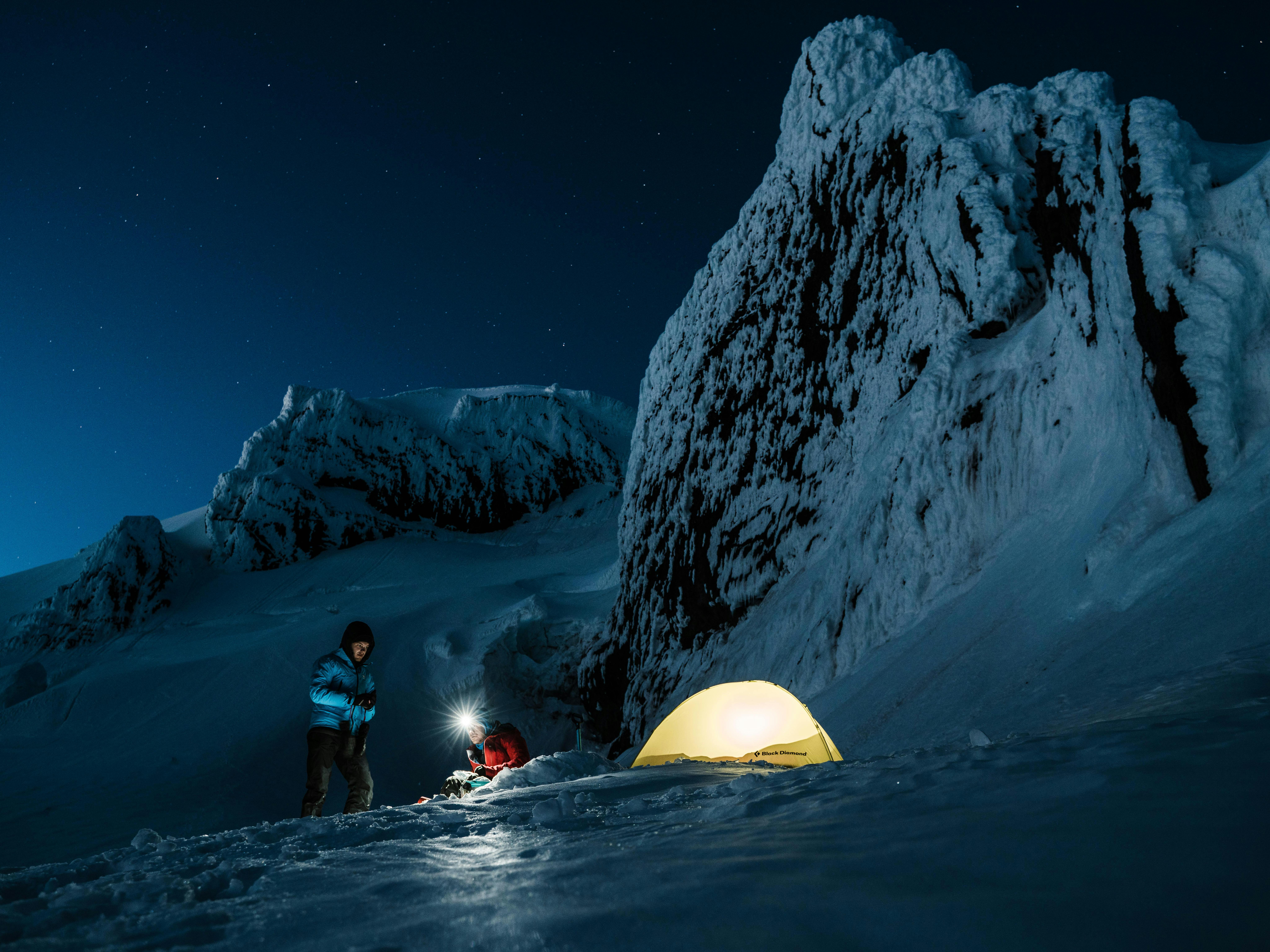
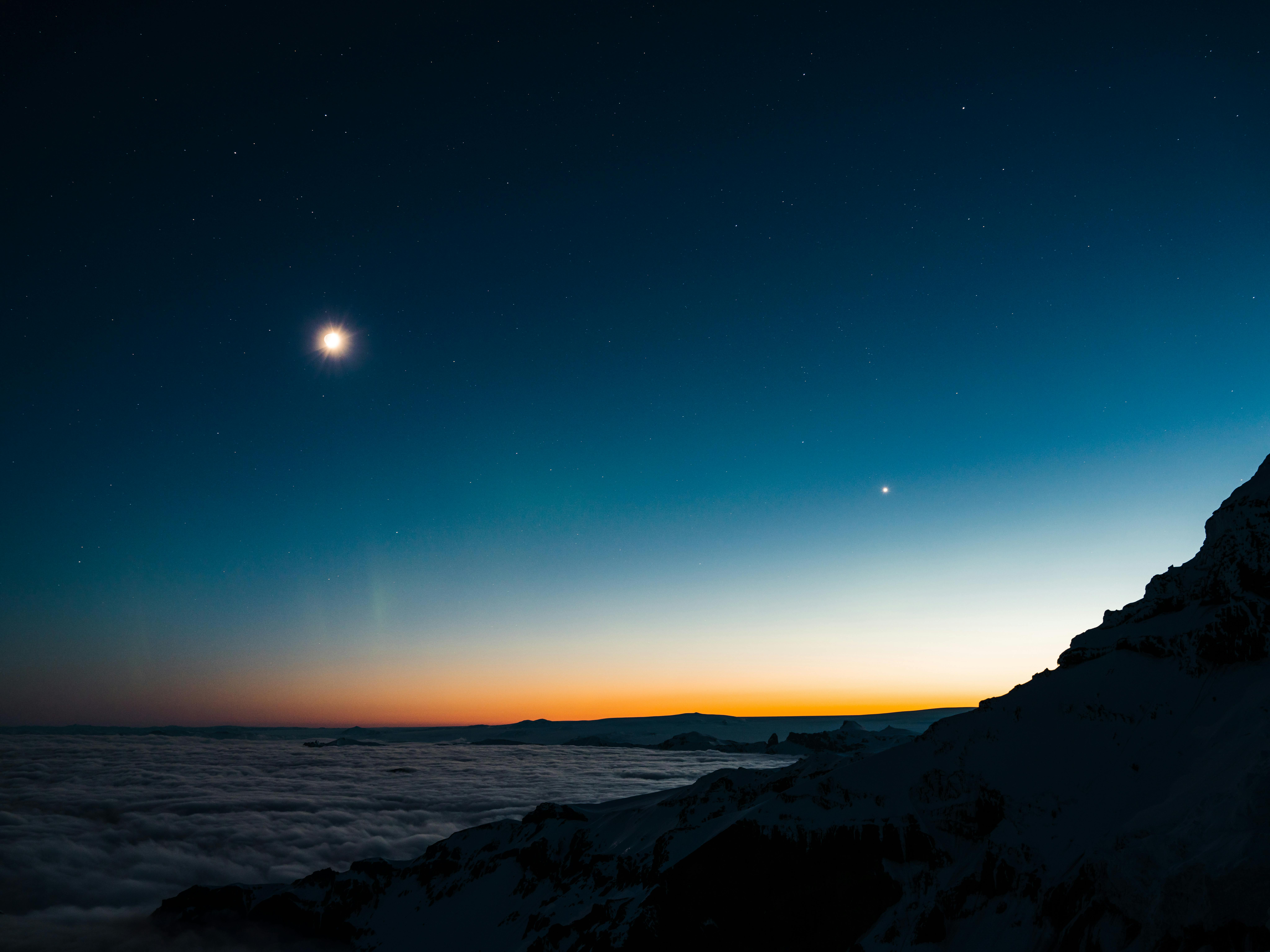
We were in good spirits as we recounted the almost unbelievable events of the evening. Whilst preparing our dinner, a spectacular display of northern lights danced across the sky. It was brief, but this moment truly signified how lucky we’d be on the trip – everything had gone to plan.
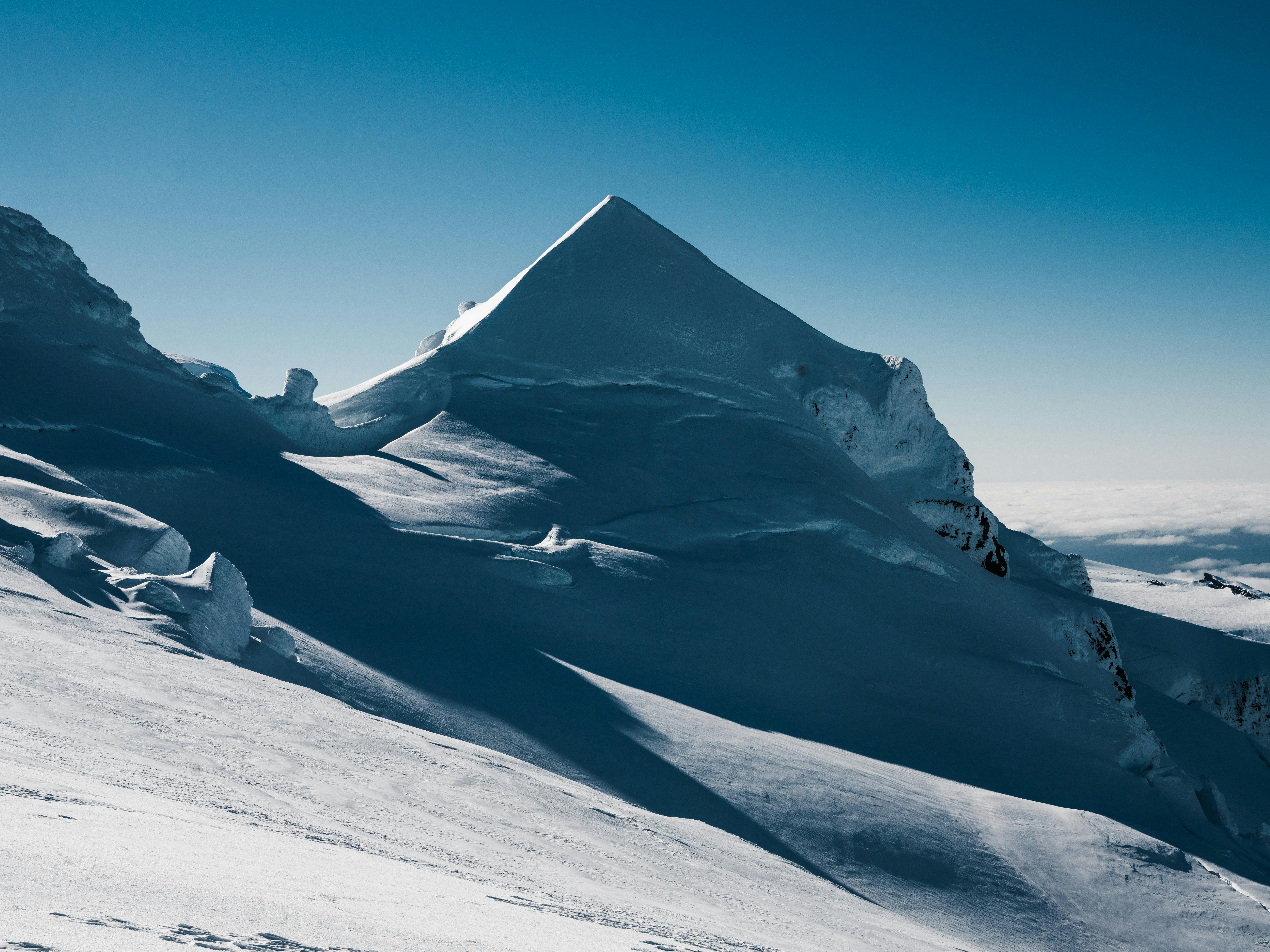
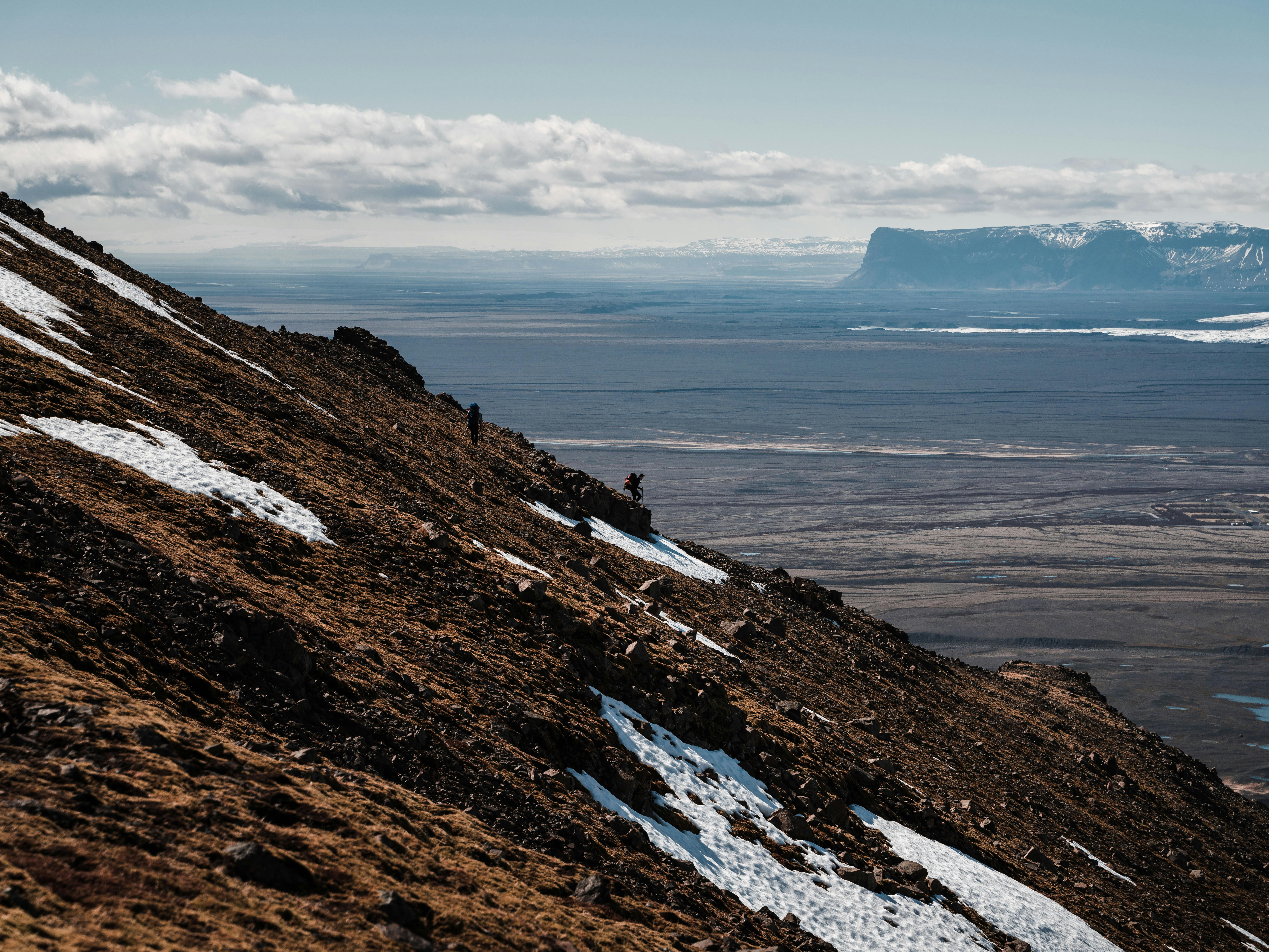
Waking up to another clear and still day on the glacier, it quickly became apparent how rare this weather window was. Three days of perfect calm conditions in a row, the climb was simply just meant to happen.
Climbing the Ram
Closing Words
Iceland is a hidden gem for mountaineering. Whilst the mountains are not so tall on world terms, you are always starting near sea level, making for long, demanding and exciting days. Climbing in such a heavily glaciated terrain is a unique experience in itself, so combining glacier travel with long days of mountaineering with undoubtedly lead to a memorable climb. With the relentless North Atlantic weather throwing constant challenges in the mix, you have to pick your weather window carefully and stay well prepared with clothing options for swift changes in conditions. There are several climbing outfitters in the Skaftafell region, so you’ll have no problem finding a professional guide or climbing group if you’d like to tackle the high peaks of Iceland during the spring summit season.
Happy climbing everyone!